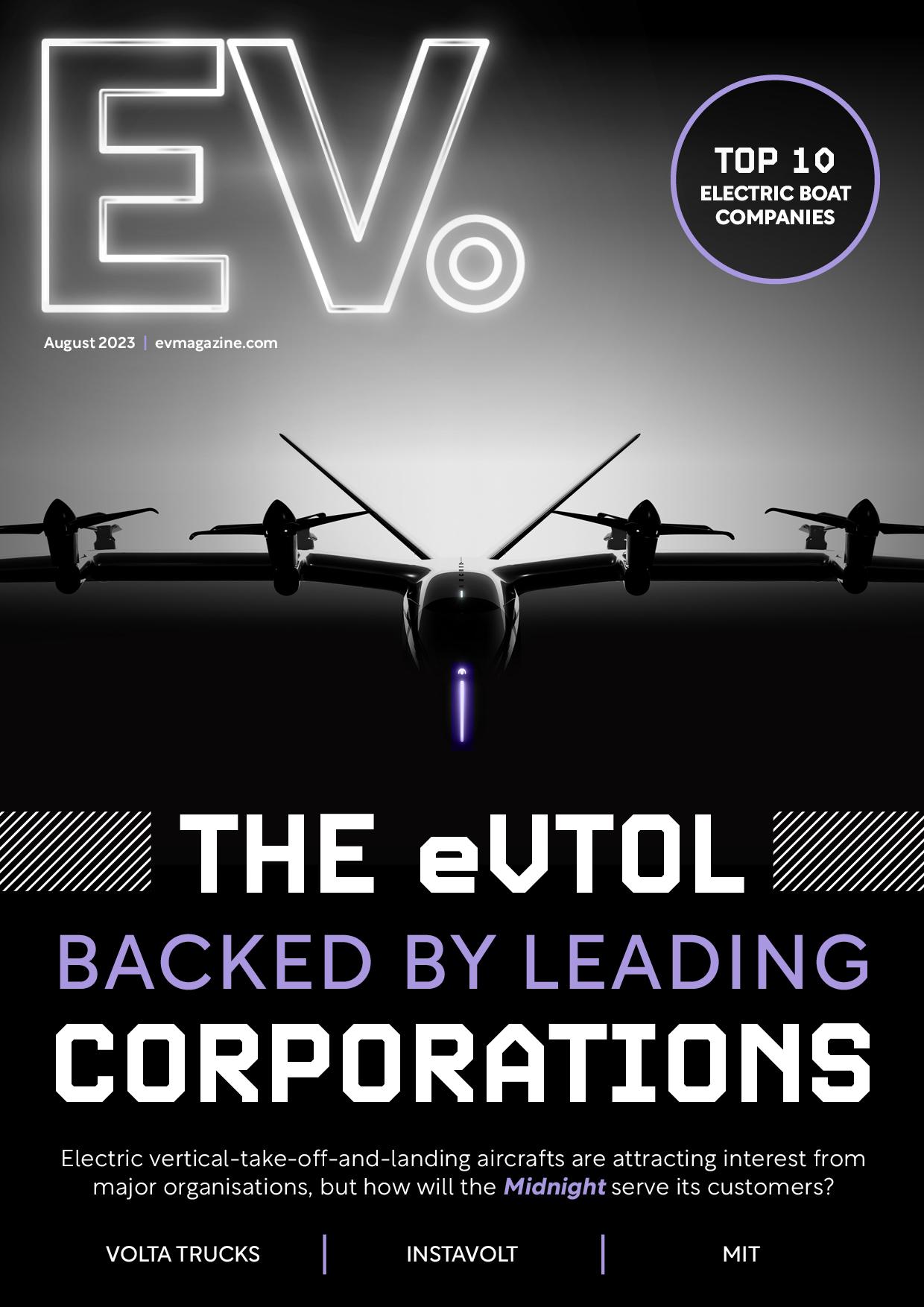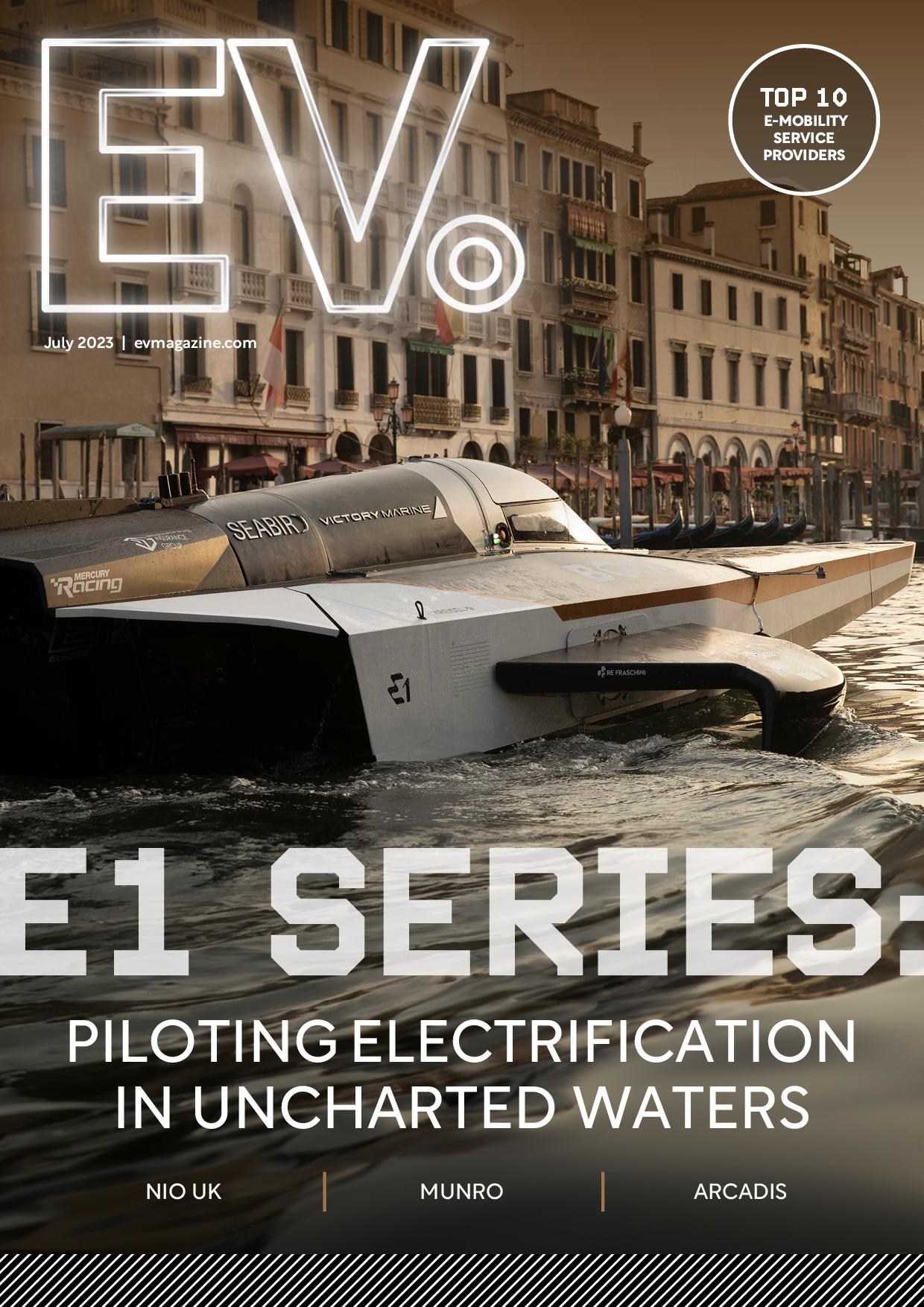CONNECTIVITY, CREATING COMMERCIAL AND SOCIAL OPPORTUNITIES







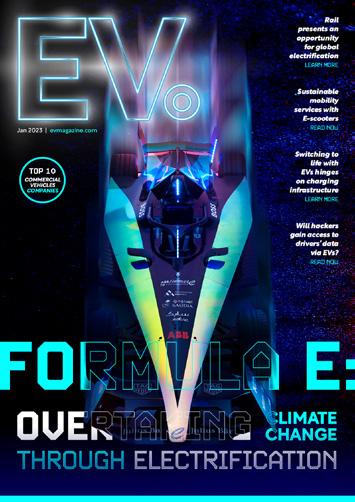












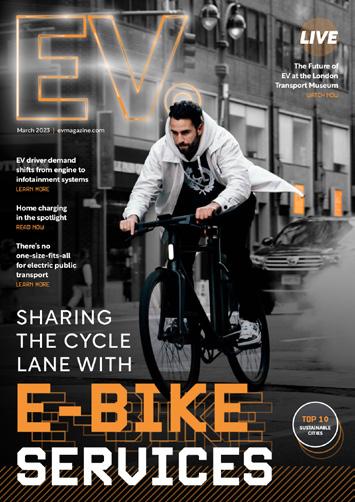



































EV magazine is an established and trusted voice with an engaged and highly targeted audience of over 1,500 global executives









Digital Magazine

Website Newsletters
Industry Data & Demand Generation
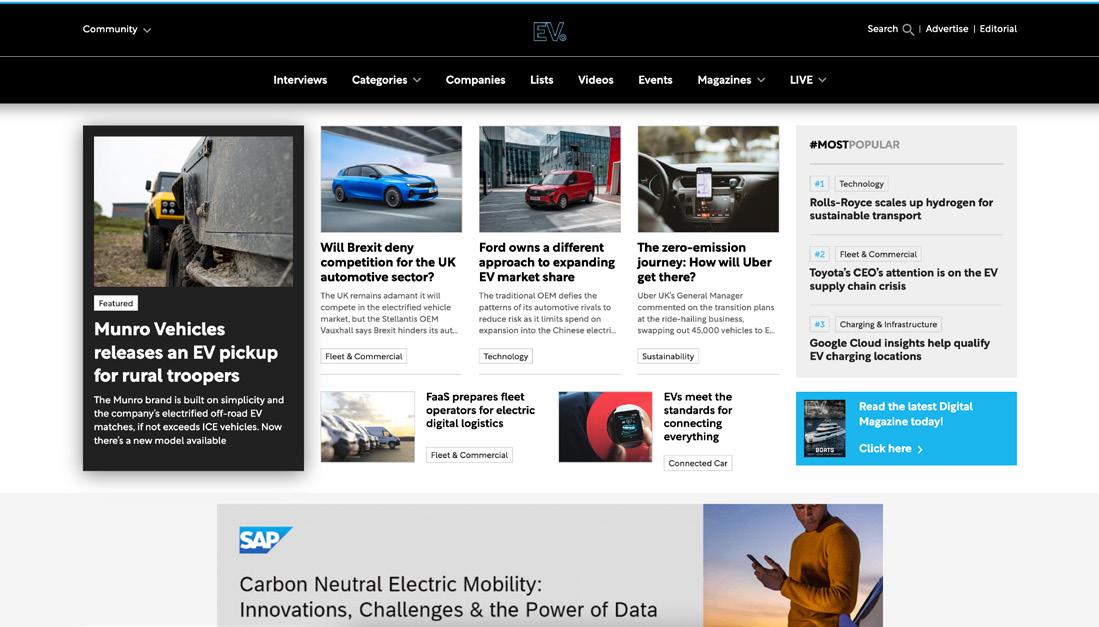

Webinars: Creation & Promotion
White Papers & Research Reports
Lists: Top 10s & Top 100s
Events: Virtual & In-Person
WORK WITH US


There’s one word to sum up the state of innovation in mobility—diversity, but not in the usual sense.
With EV adoption in full swing, more interest lies upon the more complex decarbonisation challenges: the harderto-reach areas, non-electric potential, and infrastructure availability along every step of the journey.
No industry player wants to believe that all their eggs can be kept in one basket—and rightly so. This is why decarbonisation is hinges upon on further innovation; thinking outside the box to deliver alternatives to our alternative. Hydrogen for fleets, twowheelers for urban environments, and compact chargers for the city-bound consumer. The mobility sector is becoming just as diverse as the people within it.
TOM SWALLOW EDITOR-IN-CHIEF tom.swallow@bizclikmedia.com
10 BIG PICTURE
Electrification in the world’s third largest auto market
012 EXPLAINED
Circular design: Automotive needs more than electricity
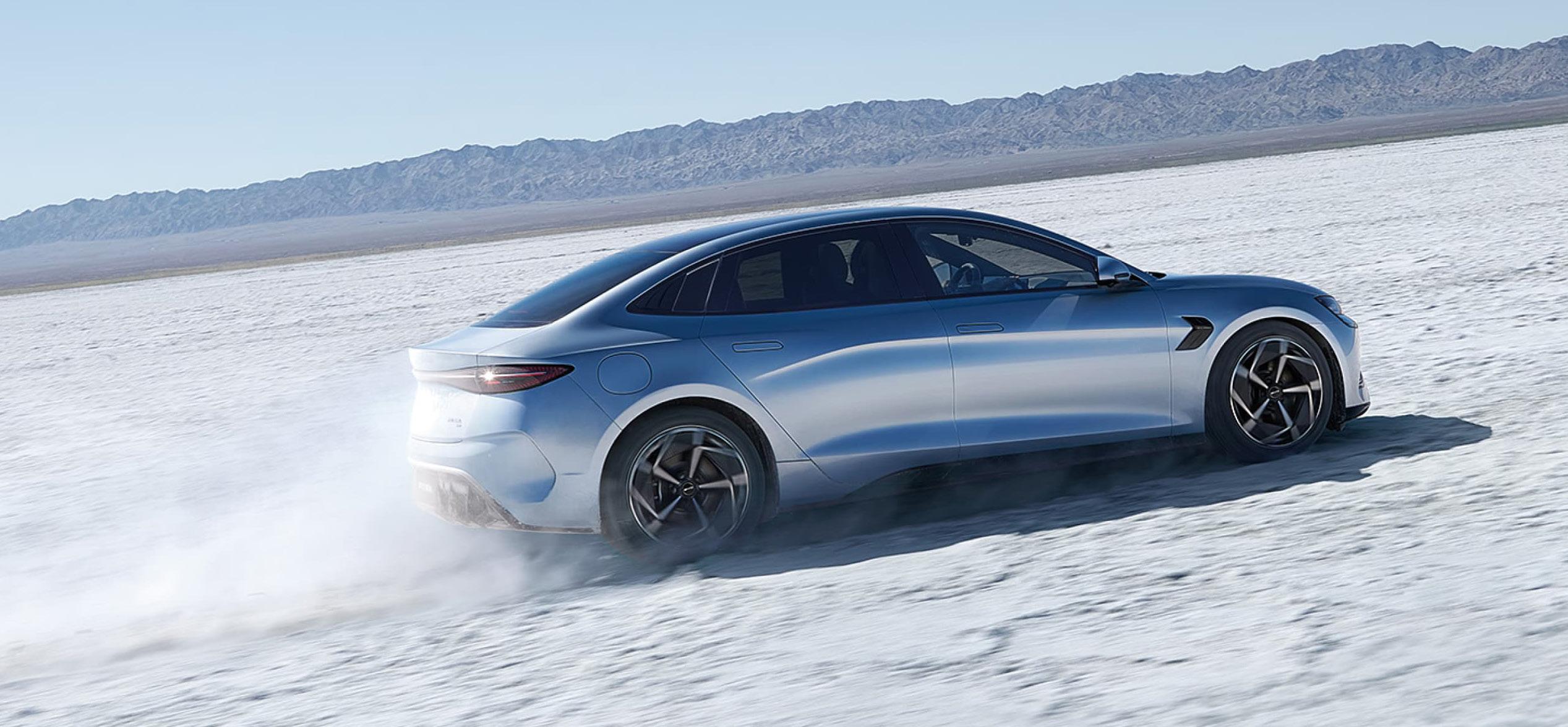

014 EV IN FOCUS
Tresa Motors V0.1: India’s finest electric fleet innovation

018 INTERVIEW
Hilmar Van Den Dool General Manager, emobility and Decarbonisation, Shell
024 DIGEST
030 CONNECTED CAR Electric platforms for self-driving vehicles
042 CHARGING & INFRASTRUCTURE Bi-directional charging turns EVs into battery energy assets

052 FLEET & COMMERCIAL Connectivity, creating commercial and social opportunities
060 MOBILITY
A bird's eye view of electric mobility across India

070 TOP TEN EV companies


















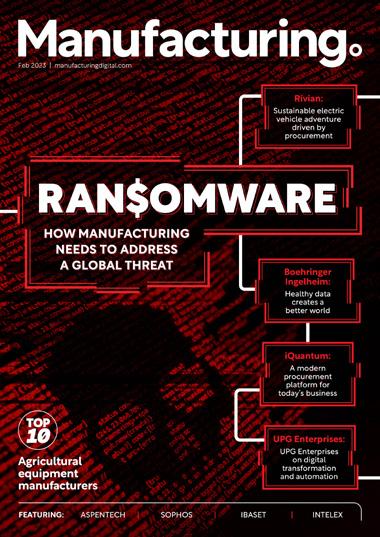
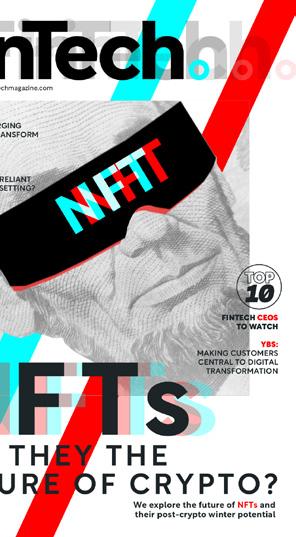
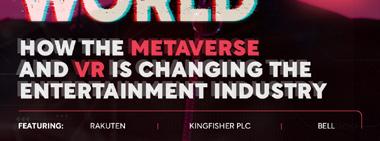



















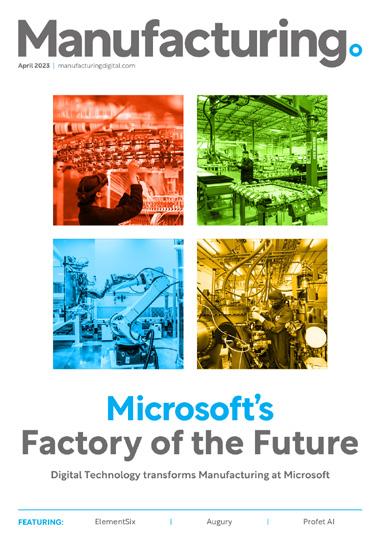

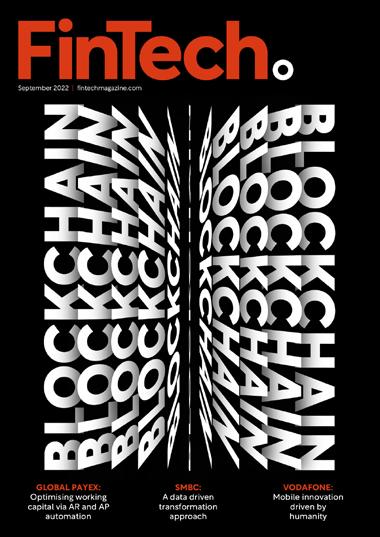




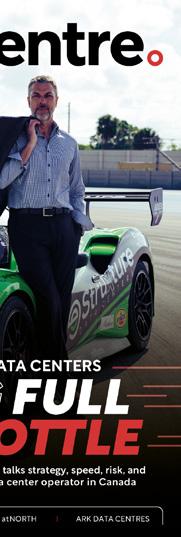



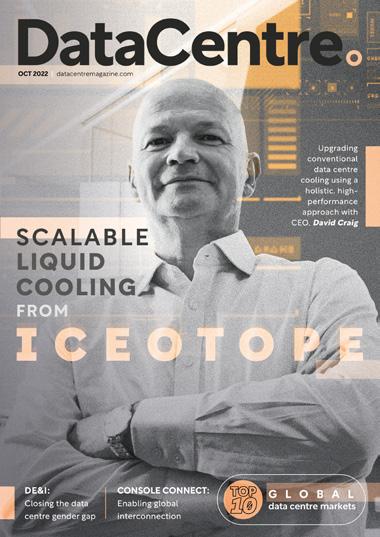
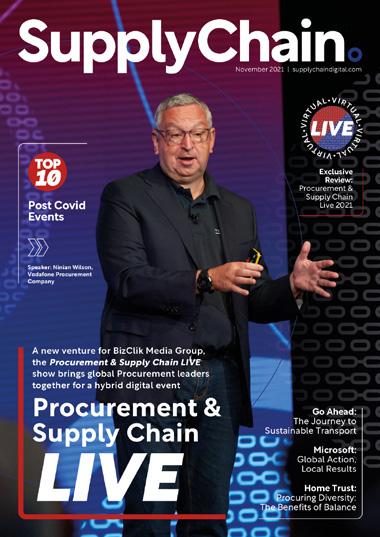



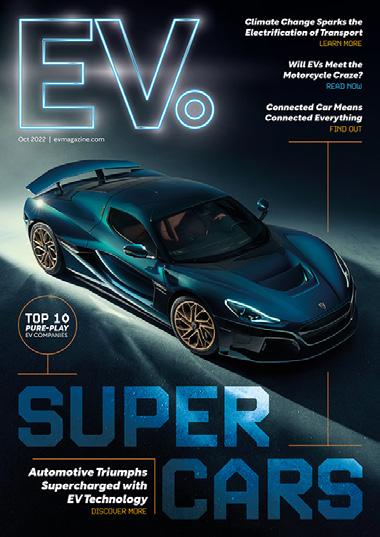





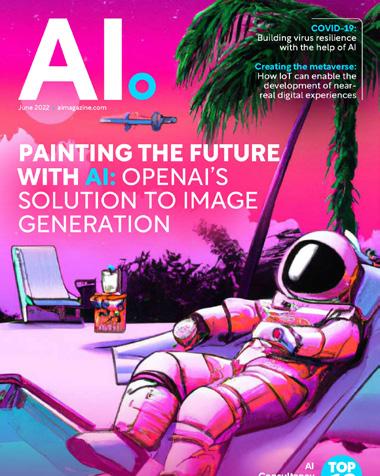

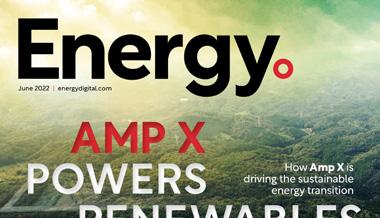









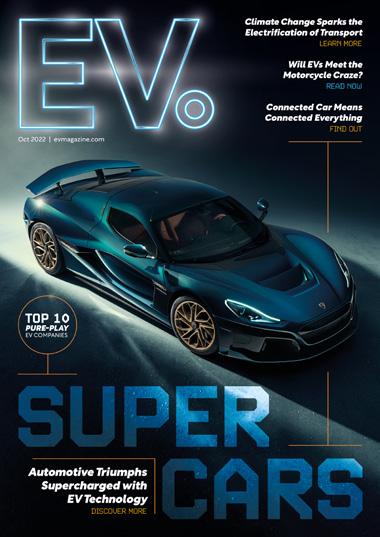
































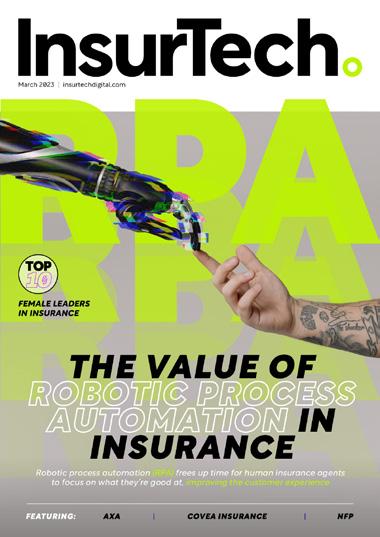


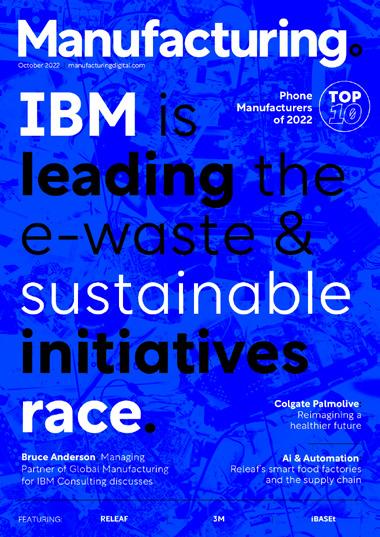

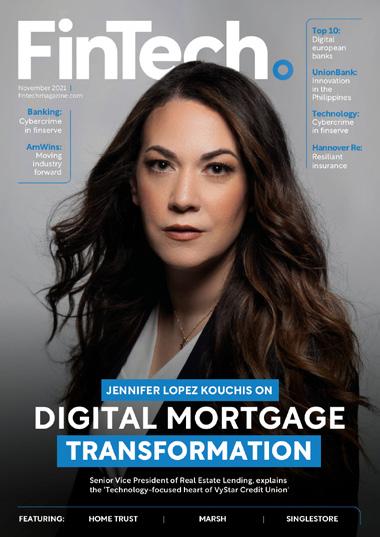





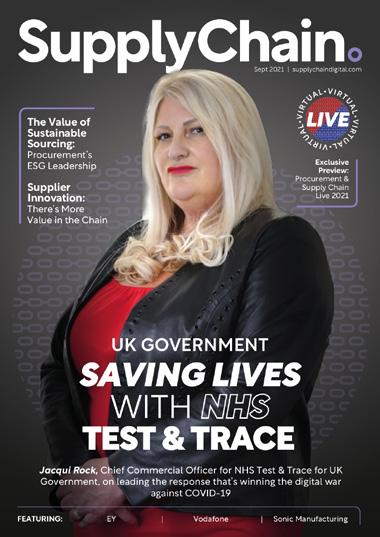





The shift to EVs is essential — morally and by law. With a number of cars entering the passenger vehicle space and fleets, transportation networks, and other methods coming to the fore, countries are at different stages of sustainable growth.
The third-largest automotive market, India, is seen as a laggard when it comes to electrification, but nevertheless the challenge is the same. Curiosity comes when realising 90% of the country’s passenger vehicles are two-wheelers or three-wheelers begs the question, “will India need electric cars like other countries do?”.
This shows that electric mobility is less about building an automotive industry powered by renewable energy and more about finding a solution with minimal impact — each unique to the social, economic, and geographical nuances

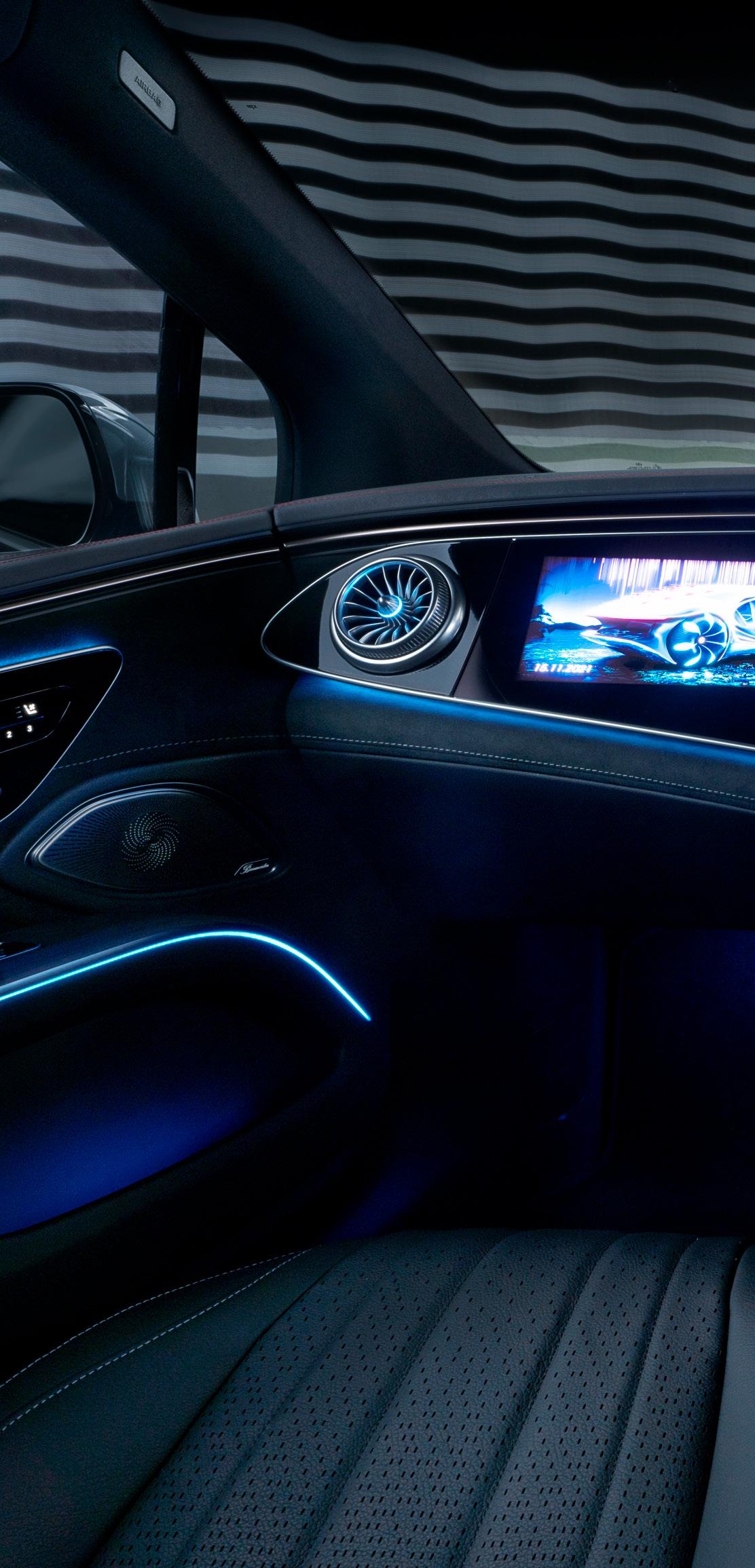
Electrification alone won’t get the world to where many hope it will be. Although emissions are the main pain point that is provoking climate change and encouraging negative effects on our air, land, and oceans, the environment requires more than decarbonisation.
Businesses in transport industries contribute to a high amount of automotive waste from metals and rubber tyres to fabrics and plastic trim pieces. While the industry is pretty good at reuse and remoulding parts for their vehicles, there is still a percentage of that waste left unaccounted for.
But, with resources depleting and the number of plastics and other waste items still extremely high, manufacturers have the ability to extract materials for use in their vehicles, and we’ve even seen companies like Mercedes-Benz
working to adopt fungi-based leather products, which will minimise the need for real leather without losing out on quality.
Circular design isn’t just about reusing materials or repurposing parts, but is more a future-thinking way to eliminate waste and create the ideal scenario for every molecule consumed by man. Firstly, producing new components with recycled materials will put them back into the cycle, but in some cases with materials that are more difficult to reintegrate, the use of biodegradable ones can be applied so they won’t be left underground in 50 years’ time.
So by incorporating plant-based or vegan products and materials into cars or innovating to produce zero-emission, degradable compounds, companies can create a holistically valuable electric vehicle with longevity.


Proprietary technologies and a unique designs make a statement as Tresa Motors delivers the V0.1 model to decarbonise India’s fleet sector
While it kind of looks like a vehicle you would find in a modern dystopian movie, like the Hunger Games or the Divergent series, Tresa Motors has created something truly innovative and is based in India where the industry seems to be catching up in the world of electricity.
The Tresa Motors V0.1 leverages proprietary electric vehicle technologies that are built by the company in-house. The company is crafting a vehicle designed for the safety of drivers while bringing to light an urban, ergonomic design that will be comfortable while generally outrageous.

The V0.1 is the home of Tresa’s core technologies, including the Flux350, Performant AI, and MEG50 Battery Module,
to enable an efficient and digital drive and room for further enhancements.
The Flux350 axial flux motor is the heart of the vehicle as it packs 800-1200V of power in just 20kg per unit, which is also liquidcooled and seamlessly integrated into Tresa’s e-axle system. This motor boasts 92% efficiency with the team working tirelessly to raise this slightly further to a rather reliable 95%.
When it comes to battery power, the MEG50 800V fully-immersible battery model allows power output of 50kWh and another in-house component designed with IP69 self-containment rating, making it a robust piece of kit for a large-scale truck application.



The Tresa Motors V0.1 is like nothing seen before in the commercial fleet market and stands tall as a geometrically designed HGV with a purpose — to decarbonise India’s fleet market. Leveraging Performant AI, the vehicle is designed for visibility and safety with the world’s first 3D mapping system installed into an HGV, which uses strategically placed cameras and LiDAR sensors to sense the road ahead and map out a 3D template of the surrounding environment.

Bringing electric vehicles (EVs) into a fleet can be a challenge, especially if you're not sure where to start or how to scale up. That’s why Shell Fleet Solutions is committed to providing operators with the necessary knowledge and infrastructure to manage the transition successfully.
As Hilmar Van Den Dool, General Manager, eMobility and Decarbonisation at Shell, explains, there’s more to electrification than switching to EVs. And there are many more benefits to approaching the transition holistically, as he explores the capabilities and opportunities that effective depot charging solutions can offer to fleets.
This means businesses need solutions that make EV charging reliable and accessible –giving them peace of mind that their vehicles will be ready to go when needed.
In the fast-paced world of delivery and operational fleets, where vehicles are critical to delivering their goods and services, electrification is accelerating 1 Fleet owners see EVs as the long-term solution, so it’s not a case of if fleets will transition to EVs, but when – and the shift is already underway.
We’re seeing a similar journey with heavy-duty fleets as well, with McKinsey & Company predicting that the majority of new trucks in Europe, the US and China will be electric by 2035 2 . Given that many organisations operate mixed fleets, electrification across all vehicles presents an effective decarbonisation pathway.
What we must remember is that this transition goes way beyond just the vehicles themselves. Fleets must also replace the energy sources they use to power their operations. Where they previously had a need to access conventional fuels, they now need the ability to charge their vehicles.
To realise the true potential of electrification – and unlock the benefits that come with it – businesses need to explore ways of driving sustainable growth. This means accelerating decarbonisation while maintaining profitability through improved efficiency and operational expenditure (OpEx), by considering the needs of their fleet today and anticipating the requirements of tomorrow.
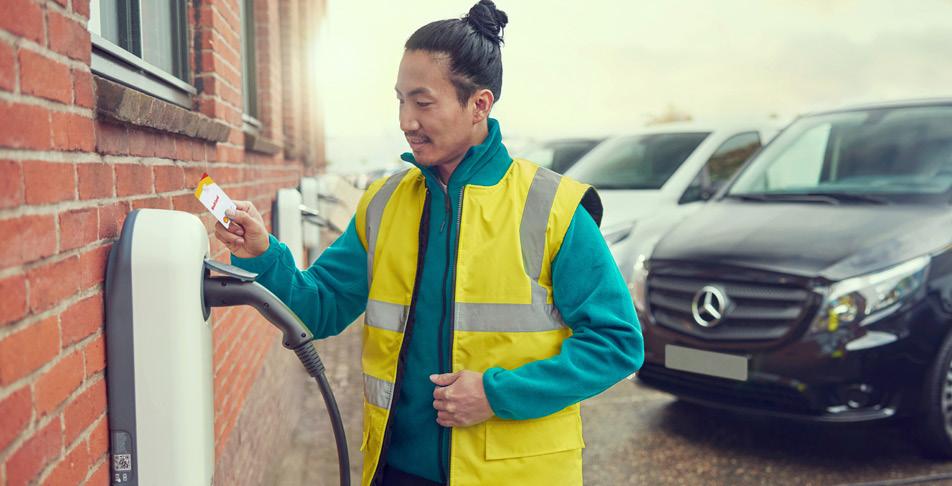

“UNLIKE ICE VEHICLES, THE CHOICE FOR EVs ISN’T AS SIMPLE AS ‘PETROL OR DIESEL’. INSTEAD, EV CHARGING OFFERS BUSINESSES THE FLEXIBILITY TO BUILD THEIR INFRASTRUCTURE STRATEGY AROUND THEIR SPECIFIC REQUIREMENTS”
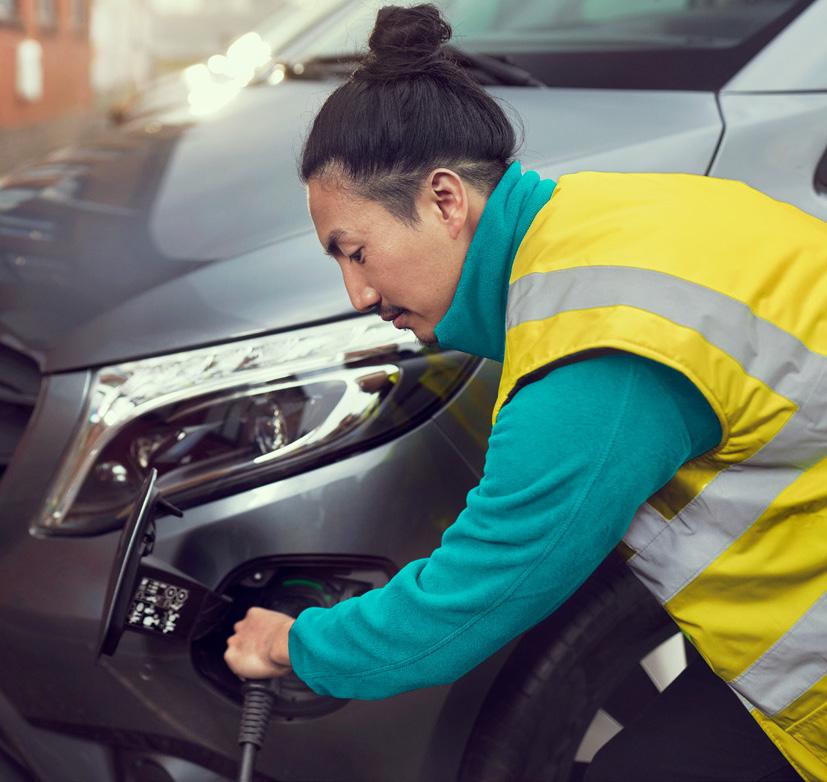
Unlike managing internal combustion engine (ICE) vehicles, the choice for EVs isn’t as simple as ‘petrol or diesel’. Instead, EV charging offers businesses the flexibility to build their infrastructure strategy around their specific requirements – from their fleet size and vehicle mix to their location and energy usage.
Meeting the needs of tomorrow’s fleet requires a mindset shift today. This means rethinking when and where vehicles charge. For example, using this enhanced flexibility to organise charging times around delivery schedules to make the most of available downtime during the day and at night. It also offers fleets an exciting opportunity to explore depot charging solutions –also referred to as eDepot solutions.
Electrification offers important opportunities to help delivery fleets reduce their total cost of ownership (TCO), achieve their decarbonisation targets, and gain a competitive advantage by offering customers sustainable services. It also helps them to meet regulations while maintaining access to low- and zero-emission zones. To unlock those opportunities, fleets will need to consider the role that EV charging plays in their electrification strategy.
For delivery (and operational) fleets, it’s expected that the majority of charging will take place at depots, and the remainder will be completed through on-the-go
eDepot solutions give fleets the ability to charge EVs at their depot.
Typically, this comprises an ecosystem of hardware, software and operational services that support the charging process – including on-site energy solutions to help provide power.
Together, these elements deliver an eDepot solution that enables EV fleets to operate effectively.
charging. This is where eDepot solutions can provide support – helping fleets to enhance the efficiency of their operations and their drivers, aid energy management, and reduce operating costs – all while supporting emissions reduction.
Equally, it’s important to recognise that eDepots are not an emerging solution. They’re available today and have the potential to revolutionise the way delivery and operational fleets operate.
Operational requirements and vehicle mixes change, so it’s crucial to approach an EV infrastructure strategy holistically,
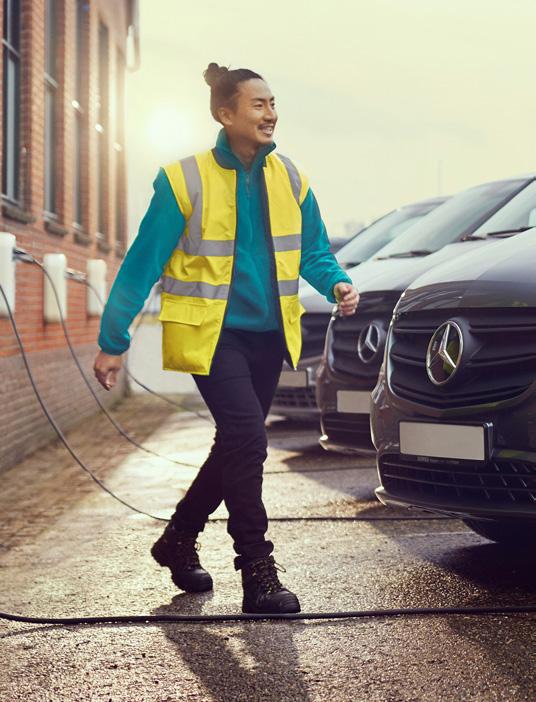
HILMAR VAN DEN DOOL
TITLE: GENERAL MANAGER, eMOBILITY AND DECARBONISATION
COMPANY: SHELL
INDUSTRY: ENERGY
LOCATION: NETHERLANDS
Hilmar Van Den Dool leads Shell’s eMobility and Decarbonisation business for fleet customers. He brings over 25 years of experience in fuels retailing, global key account management and launching low-carbon fuel products across the world. Currently he is setting up eDepot Solutions organisations in the US, Netherlands, Germany, Singapore and China. He lives with his wife and two kids in the Netherlands.
ensuring that the solutions chosen are scalable and robust enough to support an evolving fleet.
There are several questions fleet operators should ask as they implement this strategy. For example, how quickly do you need to charge each vehicle to keep your operations running as effectively as possible? When is the most convenient time to charge each vehicle to ensure they’re ready when needed? And what are the grid tariffs and regulations in your market?
There are also logistical considerations, including the space you have on-site to install charge points, how you can monitor and make the best use of your charging infrastructure to drive performance, and how you can manage the impact of your extra electricity usage on your grid and operations.
Fleet operators don’t have to answer these questions alone. Our team works with customers to understand their specific requirements and create a scalable charging solution that powers their EV operations as their fleet evolves.
Discover more about how you can accelerate your fleet’s EV transition in Shell Fleet Solutions’ latest report, ‘Powering fleet decarbonisation with eDepot solutions’. Download the report
“eDEPOTS ARE NOT AN EMERGING SOLUTION. THEY’RE AVAILABLE TODAY AND HAVE THE POTENTIAL TO REVOLUTIONISE THE WAY DELIVERY AND OPERATIONAL FLEETS OPERATE”
MOTORISED MOBILITY IS EXPECTED TO RISE BY 94% FROM 2015 TO 2050 AND REACH 34.9 BILLION PASSENGER KILOMETRES (BPK). IN 2015, THIS WAS AT 18 BPK.

“INDIA IS AN IMPORTANT MARKET WITH THE WELLDEVELOPED LOCAL MANUFACTURING OF ICES AND A WELL ESTABLISHED SUPPLY CHAIN”
GAURAV BATRA, ASSOCIATE DIRECTOR AND PORTFOLIO LEAD - AM&M, ENERGY & G&I, EY
Globally, passenger EV sales are reaching 15 million, which is almost 15-fold the number of electric cars on the roads in 2016. In 2023, the market is predominantly occupied by China with Europe the second-highest producer. Since 2021, the number of EVs has doubled.


“WHAT’S IMPORTANT TO UNDERSTAND IS THAT, UNLIKE THE PASSENGER CAR MARKET, YOU DON’T NEED A FUELING STATION AT EVERY CORNER”
JAWAD KHURSHEED CEO, HVS SYSTEMS
GUILLEM IVAÑEZ, HEAD OF PRODUCT, BI-DIRECTIONAL CHARGING, WALLBOX

“BI-DIRECTIONAL CHARGING UNLOCKS THE POWER OF THE BIGGEST BATTERY YOU WILL HAVE IN YOUR HOME, YOUR EV BATTERY”
Of course, electric cars produce zero exhaust emissions, but this isn’t the be-all and end-all of sustainable transformation. This is the misconception that maybe some consumers will be confused to hear, but transparency from organisations is key to understanding the impact of vehicles on the planet.
The supply chain network of EVs is to be addressed in order to mitigate total emissions from mobility. From energy that is used to build EVs to the power that is provided to the plug and non-energy emissions from processes — these are all factors in creating a zero-emission mobility ecosystem.
Around 80% of the total lifetime emissions of an EV are embodied, meaning they come from fabricating parts and the electricity used in powering it. According to McKinsey, EV manufacturing has roughly double the manufacturing footprint of ICE vehicles. The body of any EV can emit as much as five to ten tonnes of carbon dioxide equivalent.










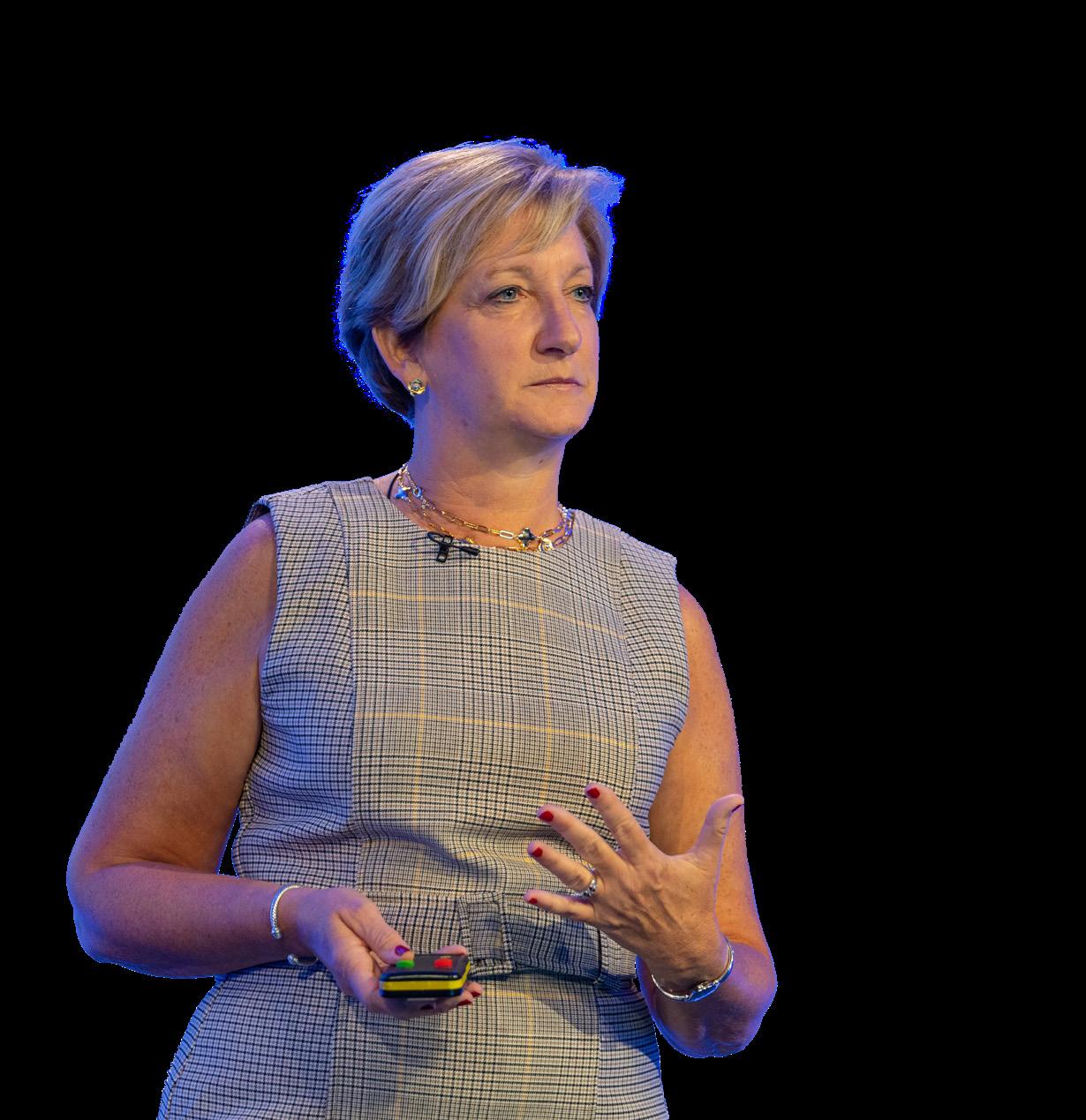












 BY GEORGIA WILSON
BY GEORGIA WILSON

Autonomous vehicles, something out of a futuristic movie? Or closer to mainstream adoption than we think?
Utilising a fully automated driving system to allow the vehicle to respond to external conditions that a human would manage, autonomous vehicles rely on sensors, actuators, complex algorithms, machine learning (ML) systems, and powerful processors to operate.
From a quality-of-life standpoint the benefits of autonomous vehicles can bring independence to those unable to drive internal combustion engine (ICE) vehicles, result in more efficient driving, and reduce road rage. But from an environmental standpoint, autonomous vehicles have the potential to dramatically reduce CO2 emissions.
According to the Institute for Transportation & Development Policy (ITDP), if the industry adopts three key trends concurrently — vehicle automation, vehicle electrification, and ridesharing — by 2050 traffic congestion could be reduce by 30%, transport costs could be cut by 40%, and urban CO2 emissions could be reduced by 80%. Taking a look under the hood: Electric platforms for self-driving vehicles
When it comes to the inner working of an autonomous vehicle, there are several factors that make an electric platform

a suitable foundation. “Let me start with the noise benefits,” says Klaus Küng,
Senior Director of Transport & Mobility Industry at Dassault Systèmes.“Electric vehicles are quieter than ICE vehicles, which makes it easier for the vehicle's sensors to detect surrounding objects. This is important for autonomous vehicles, as they rely on sensors to perceive their surroundings and make decisions about how to navigate,” Küng explains.
Other benefits include a lower centre of gravity making the vehicles more stable and easier to control and a higher torque, both important factors in being able to handle and react to unexpected changes to traffic quickly.
TITLE: SENIOR DIRECTOR
TRANSPORT & MOBILITY INDUSTRY
COMPANY: DASSAULT SYSTÈMES

INDUSTRY: SOFTWARE
LOCATION: GERMANY
Klaus Küng, is the Senior Director of Transport & Mobility Industry at Dassault Systèmes, one of the biggest Software Solutions companies in Europe. He is responsible for customer business strategy and business value creation in the automotive and transportation sector.
In his role, Küng helps manufacturers, suppliers, and startups by leveraging the 3DEXPERIENCE Platform to adjust, adapt and thrive in a dynamic, market-changing era defined by mobility as a service, sustainability priorities, and consumer demands for new experiences.


Reach decarbonisation targets whilst driving operational efficiency with Shell Fleet Solutions
Did you know that electrification involves a lot more than simply choosing a handful of EV charging points? From the energy that powers your depot to the software that optimises the charging process, you need a customised set-up that meets your exact operational needs.
That’s why Shell Fleet Solutions provides end-to-end e-mobility solutions tailored to keep your EV fleet running at peak performance.
Start your depot charging journey now and discover more about how our end-to-end e-mobility solutions can accelerate your EV transition:
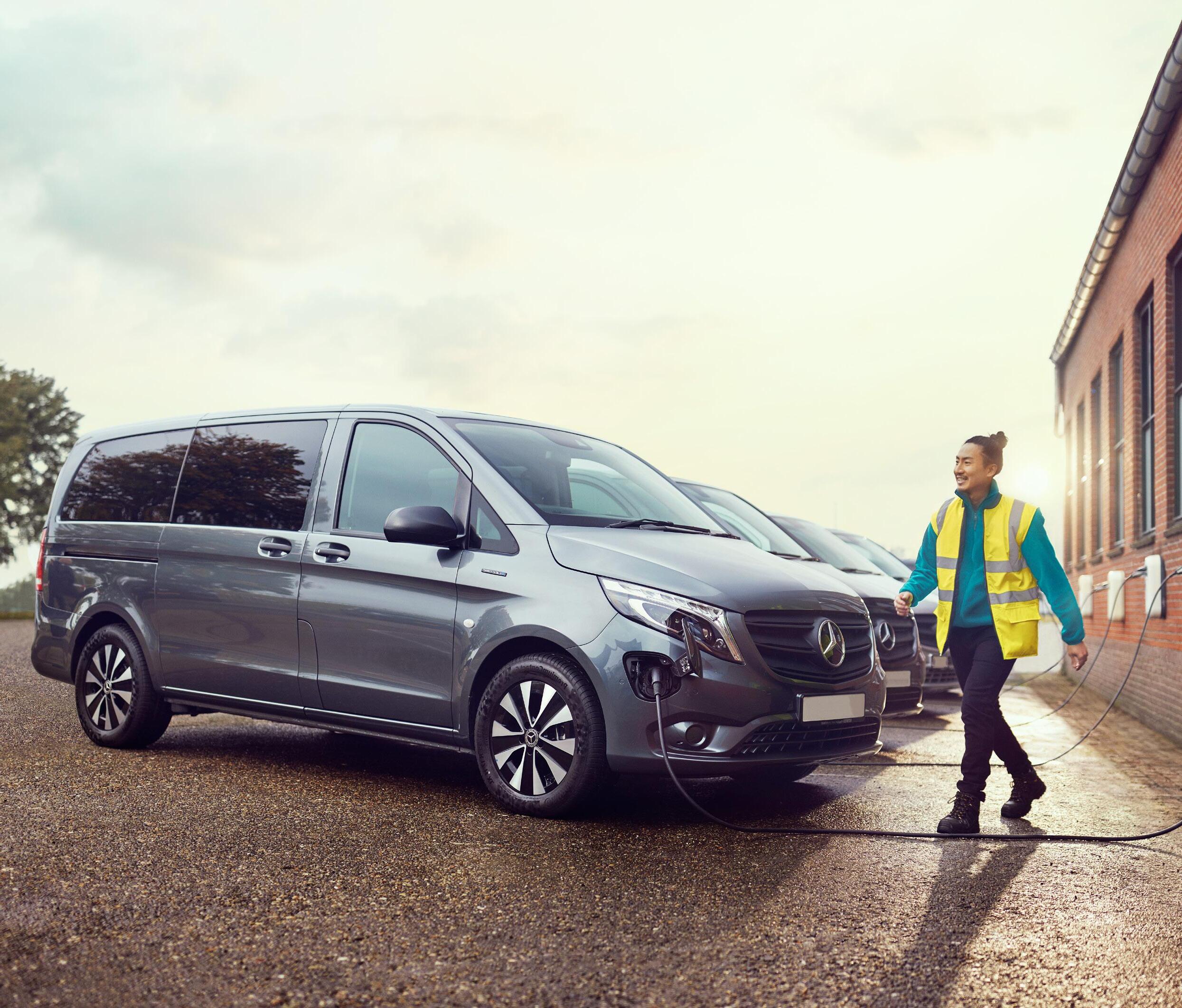
www.shell.com/emobility
Cautionary Note: www.shell.com/investors/disclaimer-and-cautionary-note.html
And the benefits don’t stop there, Küng explains that “there are many more aspects, such as reduced noise and emissions, lower maintenance costs or fully connected systems (electronic and mechanical) making electric platforms offer a number of advantages for autonomous vehicles.”

While the benefits are clear, like most innovations there are always hurdles to overcome. Küng starts by explaining the need for battery capacity: “to have electricity on board, it needs to have enough powerful battery capacity.
And we see a hard battle for materials, supply chain and production capacities, therefore production quality is key.”
However, the main challenge for the development of electric vehicle architecture is the ability to manage, coordinate, and ensure that requirements, regulations and energy management, is optimised in the most efficient way. “The complexity of such is so huge, that only sophisticated design software, such as our 3DEXPERIENCE Platform, is able to handle this difficulty,” says Küng.
“Additionally, to achieve the maximum from this complex architecture, it is crucial to be able to test and simulate, partially but also in full setup. First fully virtually, then with some components until the full vehicle is complete. This not only maximises the performance,but also reduces development times and cost, which in the end again is beneficial for the end customer.”

“WE WILL SEE OVER THE COMING YEARS A LOT OF EVOLUTIONS AND EVEN REVOLUTIONS, IT IS GOING TO BE AN EXCITING TIME FOR THE INDUSTRY”
KLAUS KÜNG SENIOR DIRECTOR TRANSPORT & MOBILITY INDUSTRY, DASSAUL T SYSTÈMES

In the words of the mathematician Clive Humby: “Data is the new oil. Like oil, data is valuable, but if unrefined it cannot really be used. It has to be changed into gas, plastic, chemicals, etc. to create a valuable entity that drives profitable activity.”
And this is true of autonomous vehicles. Without Big Data there would be no autonomous vehicles. Leveraging sensors, actuators, complex algorithms, machine learning (ML) systems, and powerful processors to operate, autonomous vehicles collate all of this data processing, on average, 4TB of data a day to complete their function
“THE COMPLEXITY OF SUCH IS SO HUGE, THAT ONLY SOPHISTICATED DESIGN SOFTWARE, SUCH AS OUR 3DEXPERIENCE PLATFORM, IS ABLE TO HANDLE THIS DIFFICULTY”
KLAUS KÜNG SENIOR DIRECTOR TRANSPORT & MOBILITY INDUSTRY, DASSAUL T SYSTÈMES
to see and sense; map surroundings; identify range, speed and distance; and communicate with other vehicles.
“We are witnessing an exponential increase of data generation in the automotive industry, strongly driven by EVs, new software architecture and business models. Based on data feedback-driven prioritisation, additional features are made available through overthe-air (OTA) updates,” explains Küng.
To achieve this, autonomous vehicle manufacturers will need to dive into the world of cloud technology. “We spoke to an OEM who wants to publish updates through OTA on a daily basis,” says Küng.
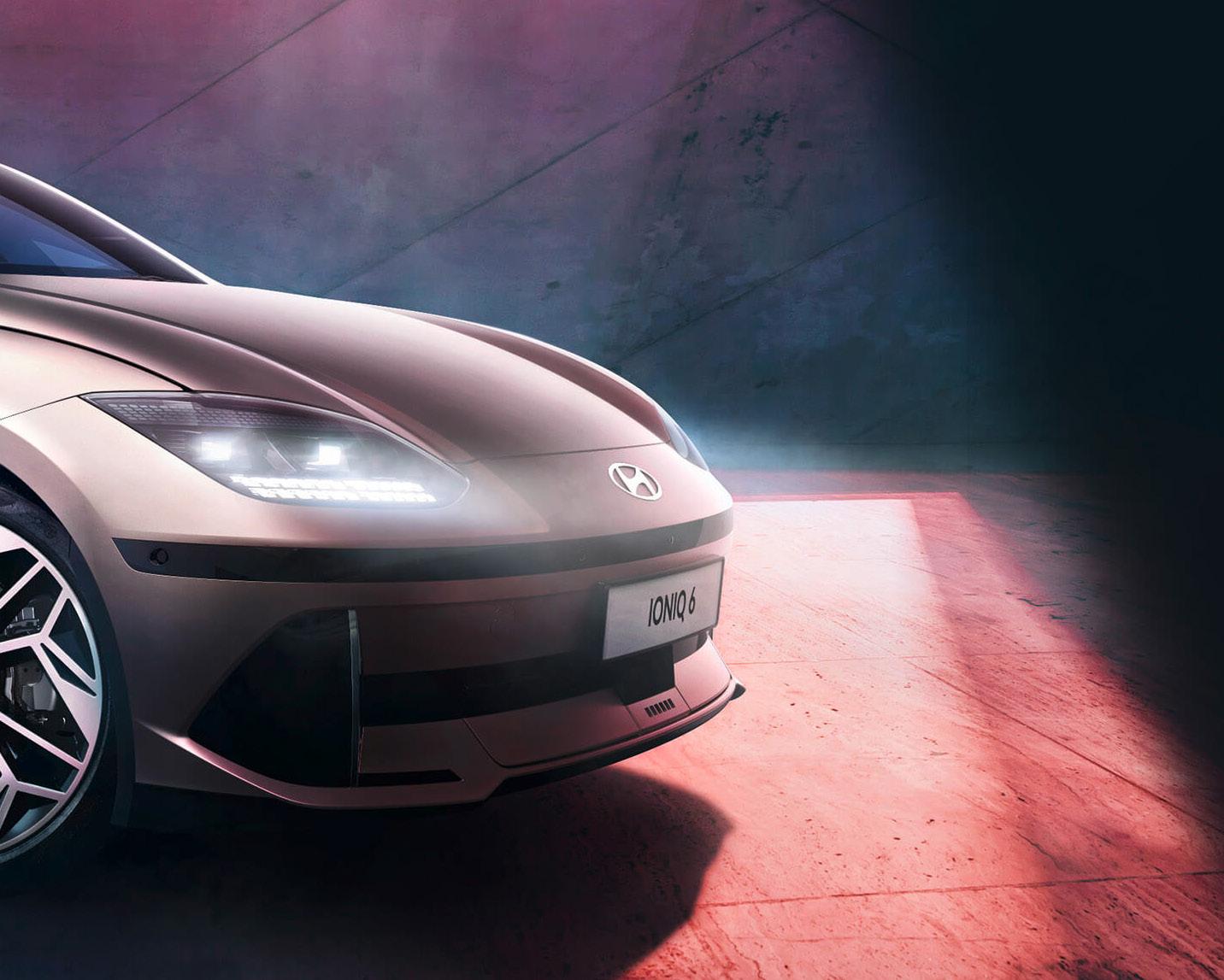

20,000 employees
270,000 enterprise Operates in 140 countries
Mercedes-Benz became the first US car manufacturer to receive government approval for a level three driving feature (January 2023)
Every year the autonomous vehicle industry increase by 16% globally
The autonomous vehicle market is currently worth US$54bn
55% of americans believe that most cars will be self-driving by 2029

“Analysing data from vehicles in use, developing adjustments, and pushing those back to the cars will decrease the maintenance cost and increase the lifecycle of a car significantly. This is also one of the reasons why eight of the TOP 10 EV makers use our 3DEXPERIENCE Platform on cloud. It gives them the possibility to scale easily based on their growth and related to the above, extend needed new functionalities very easily. This allows them to adapt to new demands and new business models very quickly, upstream and downstream the process.”
Reflecting on the future landscape for the industry, Küng promises an exciting time for EVs and autonomous vehicles: “we will see over the coming years a lot of evolutions and even revolutions, it is going to be an exciting time for the industry.”

“WE ARE WITNESSING EXPONENTIAL INCREASE OF DATA GENERATION IN THE AUTOMOTIVE INDUSTRY, STRONGLY DRIVEN BY EVS, NEW SOFTWARE ARCHITECTURE AND BUSINESS MODEL”
KLAUS KÜNG
The Global Sustainability Awards 2024 will be celebrating the very best in Sustainability & ESG with the following categories:

Sustainability Strategy Award
–
ESG Program Award
–
Climate Change Award
–
Diversity & Inclusion Award
–Net Zero Award
–
Sustainable Supply Chain Award

–
Sustainable Technology Award
–
Sustainable Consultancy Award
–
Future Leader Award
–
Executive of the Year Award
–
Project of the Year Award
–
Lifetime Achievement Award



Bi-directional charging is an enabler of low-cost and efficiency and Guillem Ivañez from Wallbox shares the solution’s consumer and commercial benefits

There are more benefits to be gained from EVs than simply developing more sustainability models for the brands that consumers all know and love. While many consumers and businesses understand the sense of urgency around climate change and the need to find less pollutant alternatives to fossil-fuelpowered cars, there are also many pros to battery-electric vehicles (BEVs) that are yet to be truly leveraged in a renewable energy ecosystem.
Bi-directional charging is one of them, which is often seen as a bonus for drivers, but realistically this could be a gamechanger for homeowners, business owners, and the mobility network at large as it looks to create a more connected mobility system and optimise the use of energy.
To find out more about what it means to have bi-directional charging in place and why this idea was brought to fruition,

Guillem Ivañez (GI), Head of Product, Bi-directional Charging at Wallbox answers our questions on the topic.
TS: What exactly is bi-directional charging?
GI: Bi-directional charging unlocks the power of the biggest battery you will have in your home, your EV battery. Quasar 2 empowers people to take control of their energy consumption by letting them charge when energy is cheapest and send the power back to their homes or the grid when grid energy is expensive. This process is referred to as Vehicle-to-Home (V2H).
In addition, for certain regions, EV users with a Quasar 2 can decide to sell energy back to the grid and build additional revenue streams from their car and charger, this is a game changer for the industry as it will also enable us to improve grid resilience. This process is referred to as Vehicle-toGrid (V2G).
TS: Where does the idea of bi-directional charging come from?
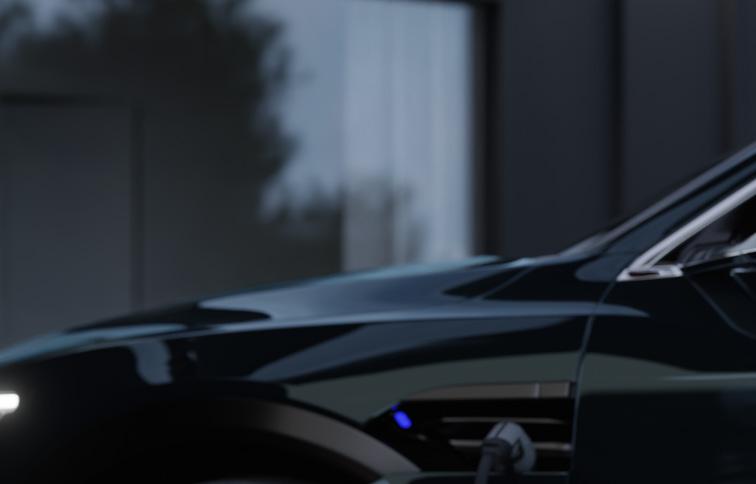
GI: Bi-directional charging was born after a natural disaster: Great East coast Fukushima, 2011. After the earthquake and the subsequent tsunami, Japan suffered severe blackouts. To accommodate their energy needs they used EVs during recovery efforts to support rescue and medical personnel. Electricity was required to assist in the rescue efforts and CHAdeMO's functionality allowed them to use power from the EVs. That was the first implementation of CHAdeMO's V2X functionality.
After this natural disaster Japan developed a bi-directional protocol to use EV batteries as distributed energy resources to formalise the process for future emergencies. Until recently, CHAdeMO was the only protocol that enabled V2X (Vehicle-to-Everything) technology, among the international DC charging standards.
“ONE OF THE KEY AREAS IN WHICH BI-DIRECTIONAL CHARGING CAN BE USED TO SAVE A BUSINESSES MONEY IS THROUGH INCORPORATING IT INTO ENERGY MANAGEMENT SYSTEMS”
GUILL EM IVAÑEZ, HEAD O F PRODUCT, BI-DIRECTIONAL CHARGING, WALLBOX
There should be no borders when it comes to electric travel That’s why IONITY operates charging stations along European motorways that are open to electric vehicles of any brand With several charging points at each location With ultra-fast charging stations that recharge your vehicle’s batteries for the next stretch of your journey in the shortest time possible And with electricity generated exclusively from renewable energy sources So, you are not only travelling emission-free: the journey really is carbon-neutral Find out more here: weareonit.biz
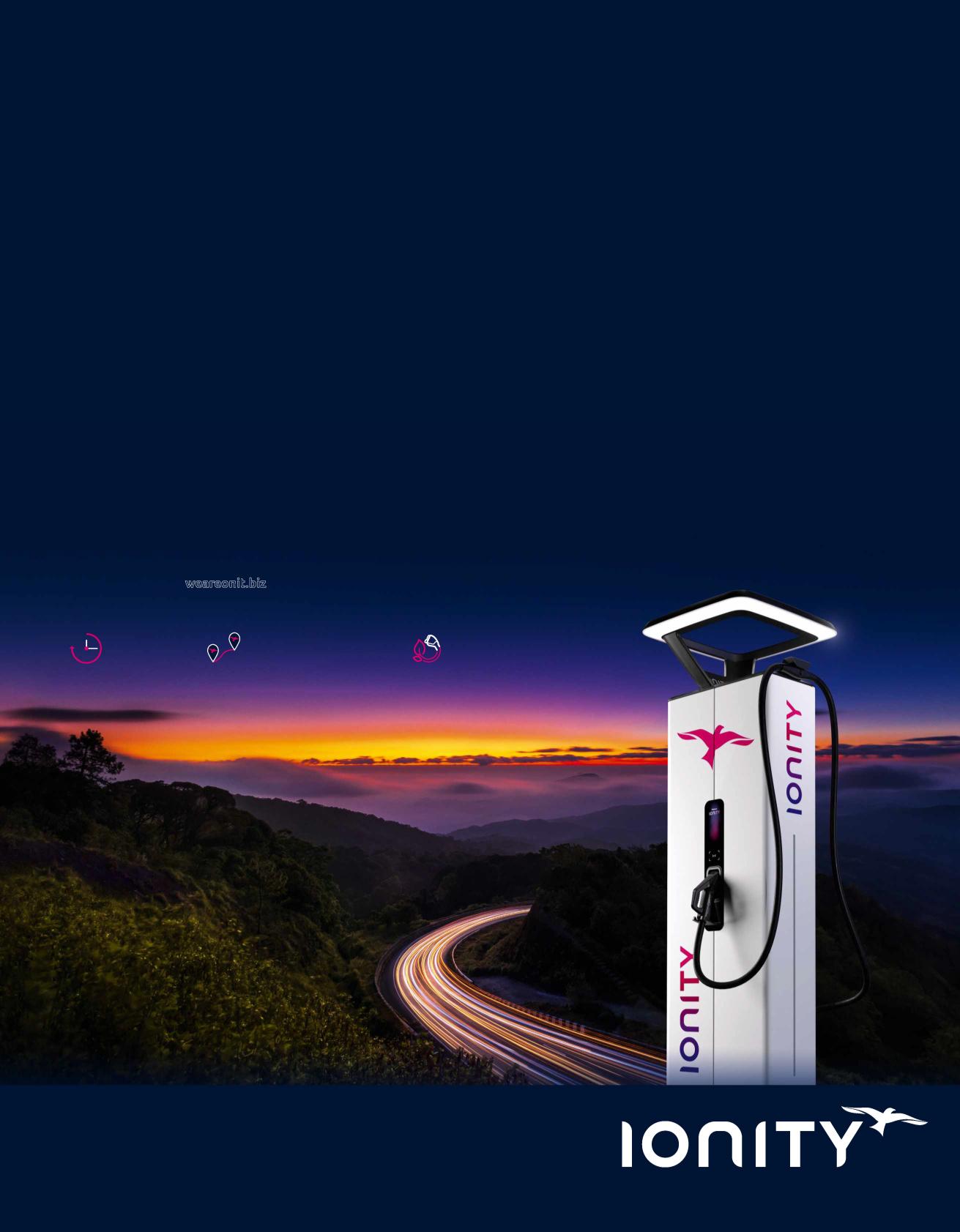
In 2019, Wallbox launched Quasar, the world’s first bi-directional EV charger for the home, which utilised a CHAdeMO connector. This charger has been utilised by a number of V2X projects globally, including Octopus Energy’s Powerloop project.

At Wallbox we believe that bi-directional charging is a key solution to empower people to get more out of EVs and build a more resilient renewable energy based electricity grid.
TS: How can bi-directional charging save businesses money?
GI: Using the battery of a parked EV as an energy asset is simple. Charge the EV when energy from the grid is cheapest (or even free when you incorporate solar PV panels) and power your business when energy is more expensive.
GUILL
One of the key areas in which bi-directional charging can be used to save a businesses money is through incorporating it into energy management systems.
On an individual scale, an Australian winery in the Barossa Valley has adopted a 40-kWh Nissan LEAF lithium battery as the main energy source powering its business. As Nissan LEAF’s are capable of bi-directional energy loading they are able to perform V2H and V2G. Installing our bi-directional
“TO SUCCESSFULLY MOVE FROM FOSSIL FUELS TO RENEWABLE ENERGY, WE NEED TO BUILD A NEW PARADIGM”
charger, Quasar, and connecting it to their solar PV system has allowed them to transition from spending US$6,000 annually on electricity to making a profit of about US$50 a week from selling their excess power to the grid, meaning an annual profit of around US$2,500.
On a larger scale, SIRIUS, Wallbox's pioneering energy intelligence solution, balances a number of distributed energy resources, but importantly incorporates 23 bi-directional cars connected to Quasars. This sophisticated software that was developed to incorporate V2B (vehicleto-building) technology into a commercial energy management system has allowed Wallbox to optimise its energy use, saving 85,000euro per year in electricity bills.
TS: Are there more potential opportunities in bi-directional charging?
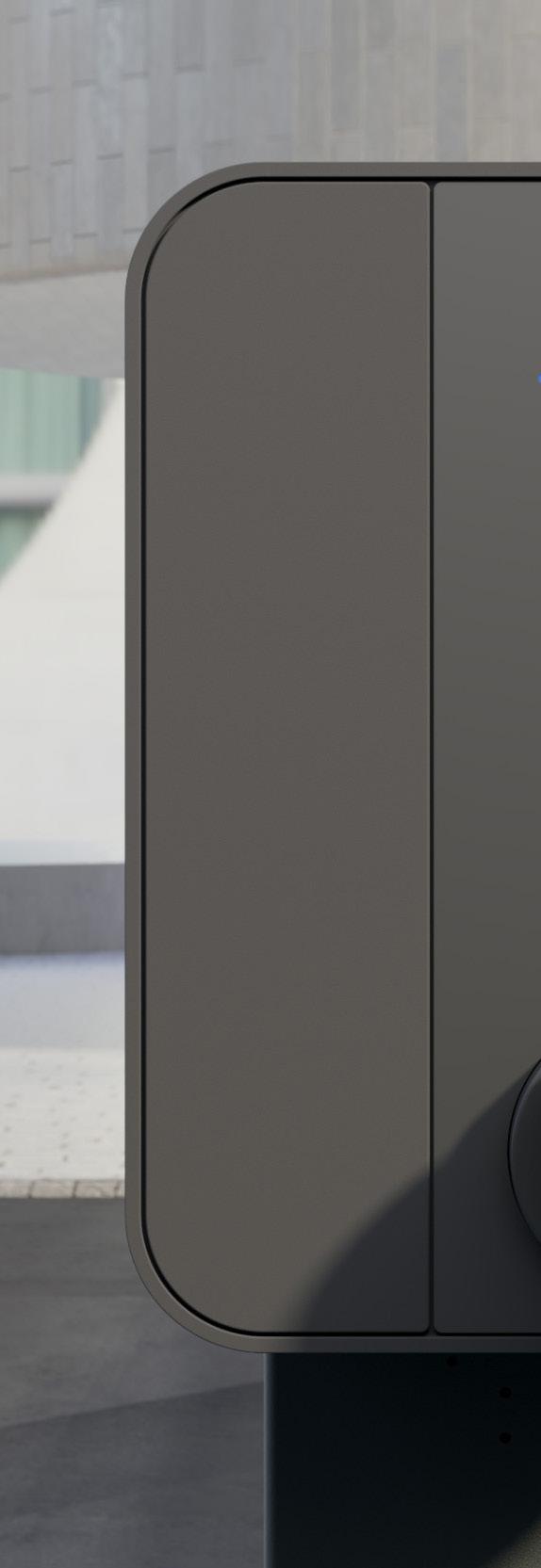
GI: A key obstacle to the green energy transition is the inconsistent production of renewable energy sources. The grid needs to match generation and consumption. The more renewables used, the more difficult this becomes.
To successfully move from fossil fuels to renewable energy, we need to build a new paradigm where instead of matching generation to consumption, we couple demand response systems with bi-directional charging to build decentralised energy networks. Bi-directional charging allows us to use EVs, which will soon be the world’s largest source of lithium batteries, to store energy during peak production periods and use it later to manage energy distribution and stabilise the grid.

Aside from allowing societies to move to flexible energy consumption systems, bi-directional charging can help:
1. Reduce costs relating to transmission, distribution and transformation infrastructure.
2. Improve grid resilience through decentralised generation and flexible consumption.
3. Alter the status quo by decentralising and democratising energy and providing the end user with tools to optimise and control their energy consumption and gain energy independence.
4. Build a new infrastructure paradigm by using EVs as a decentralised power network connected through bi-directional charger. An EV can store enough electricity to supply up to 5 homes for 24h, at scale the technology will transform energy networks as we know them.
GUILL EM IVAÑEZ, HEAD O F PRODUCT, BI-DIRECTIONAL CHARGING, WALLBOX
“BI-DIRECTIONAL CHARGING UNLOCKS THE POWER OF THE BIGGEST BATTERY YOU WILL HAVE IN YOUR HOME, YOUR EV BATTERY”
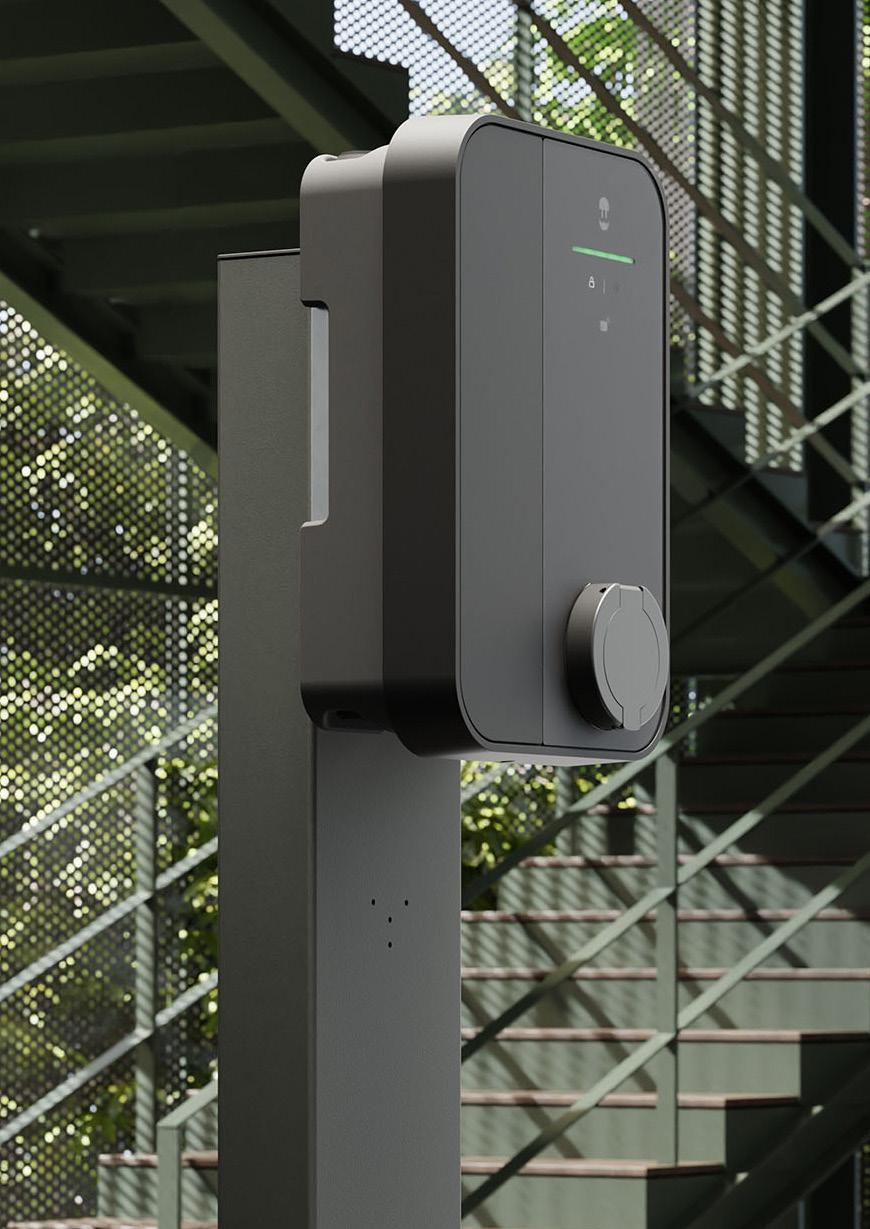

TS: Can you share any successful examples of cost savings through bi-directional charging?
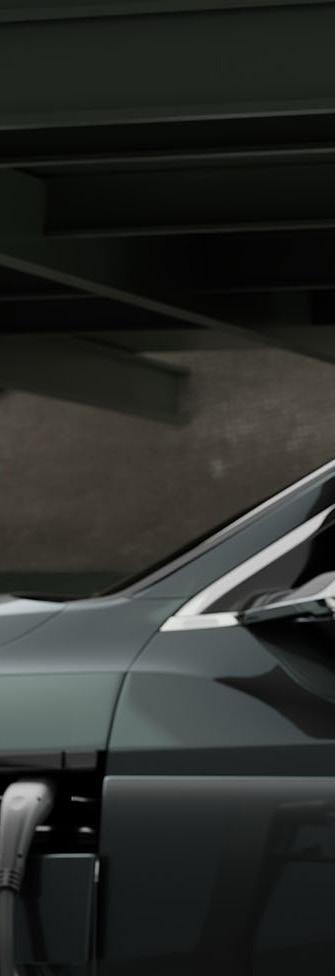
GI: In February 2020, Wallbox grew by more than 11,000 square metres and exceeded 650 workplaces, and a grid power of 400kW was needed, while that available was only 173kW. Instead of upgrading the grid infrastructure which would have cost more than €500,000, Wallbox developed SIRIUS, Wallbox’s pioneering energy intelligence solution, which harnesses the power of bi-directional charging.
SIRIUS enabled the integration of the electric grid with the company’s distributed energy resources (DERs) composed of 400kWp of solar panels, bi-directional EV chargers, 23 Nissan LEAF and 560 kWh stationary batteries, balancing all DERs in real-time to optimise the building’s energy consumption, reducing the company’s environmental impact and saving money.
By investing around €415,000 in SIRIUS instead of more than €500,000 for grid upgrades, Wallbox reduced implementation time from 12 to 4 months and saved more than €85,000 per year in electricity bills.

Recognising that connectivity is merely a part of the overall zero-emission fleet, HVS Systems brings the hydrogen perspective to sustainable logistics

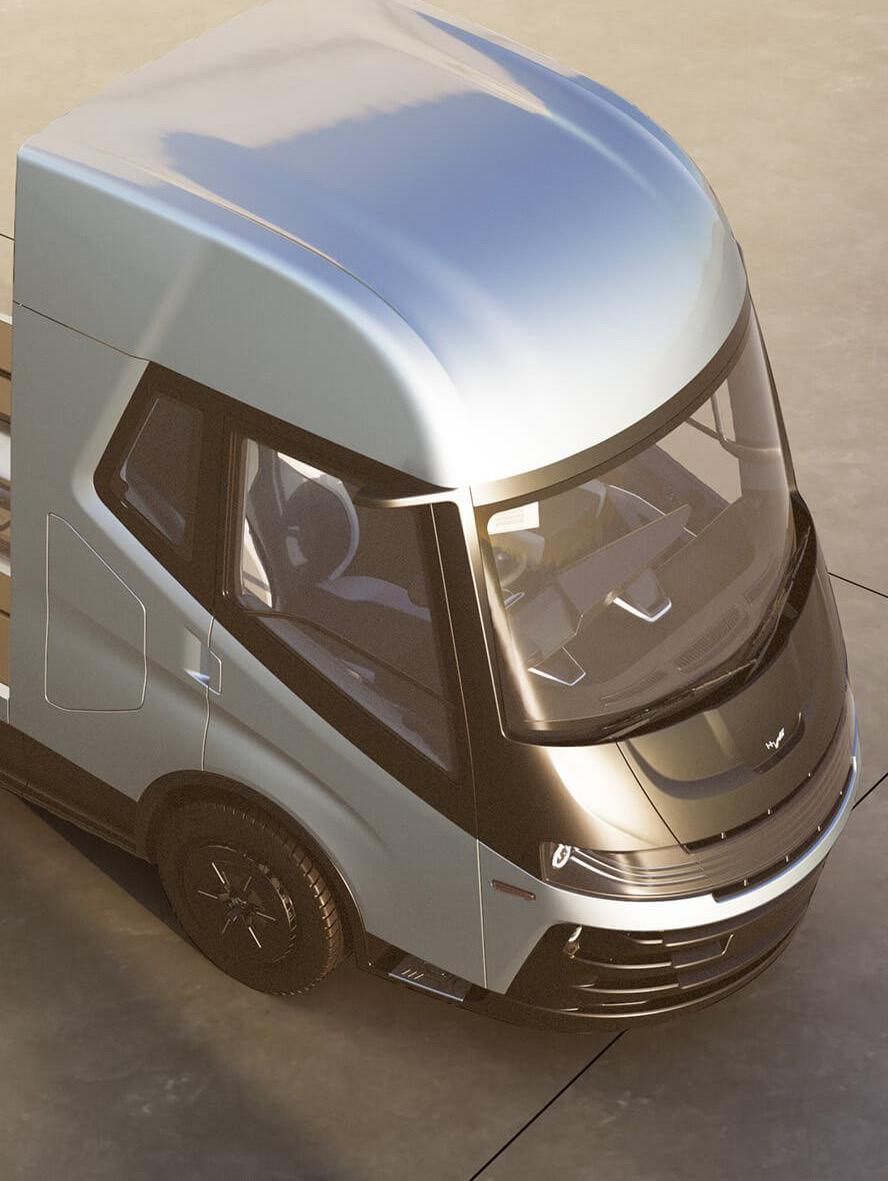

Connectivity’s intention isn’t to be the enabler of electrified transportation. Technology is much better than that, and is so influential in zero-emission fleet adoption and logistics decarbonisation.
There are a number of solutions that can help reduce the impact of fleets, but there is no one-size-fits-all approach when it comes to propulsion systems and, more importantly, a strategic outlook is necessary to embed sustainability into the process in the long term. This therefore writes off the conventional idea that more vehicles on the road means we need more stop-off points to power them.
This is where the word strategy and connectivity meet. By firstly demonstrating the capabilities of a connected fleet in the current operational landscape, business can start to visualise ways to optimise it. One challenge is understanding where different propulsion systems work at their best, but another is leveraging connected services to oversee operations nationally and internationally — maximising the operating time of vehicles and providing more accurate cost and delivery targets.
One of the trends in the fleet sector at the moment is seen across the new HGV market, whereby companies are developing tractor units that are smarter than ever before, optimising them for the routes they will be taking and the payloads they carry — all achieved with a little help from connectivity.

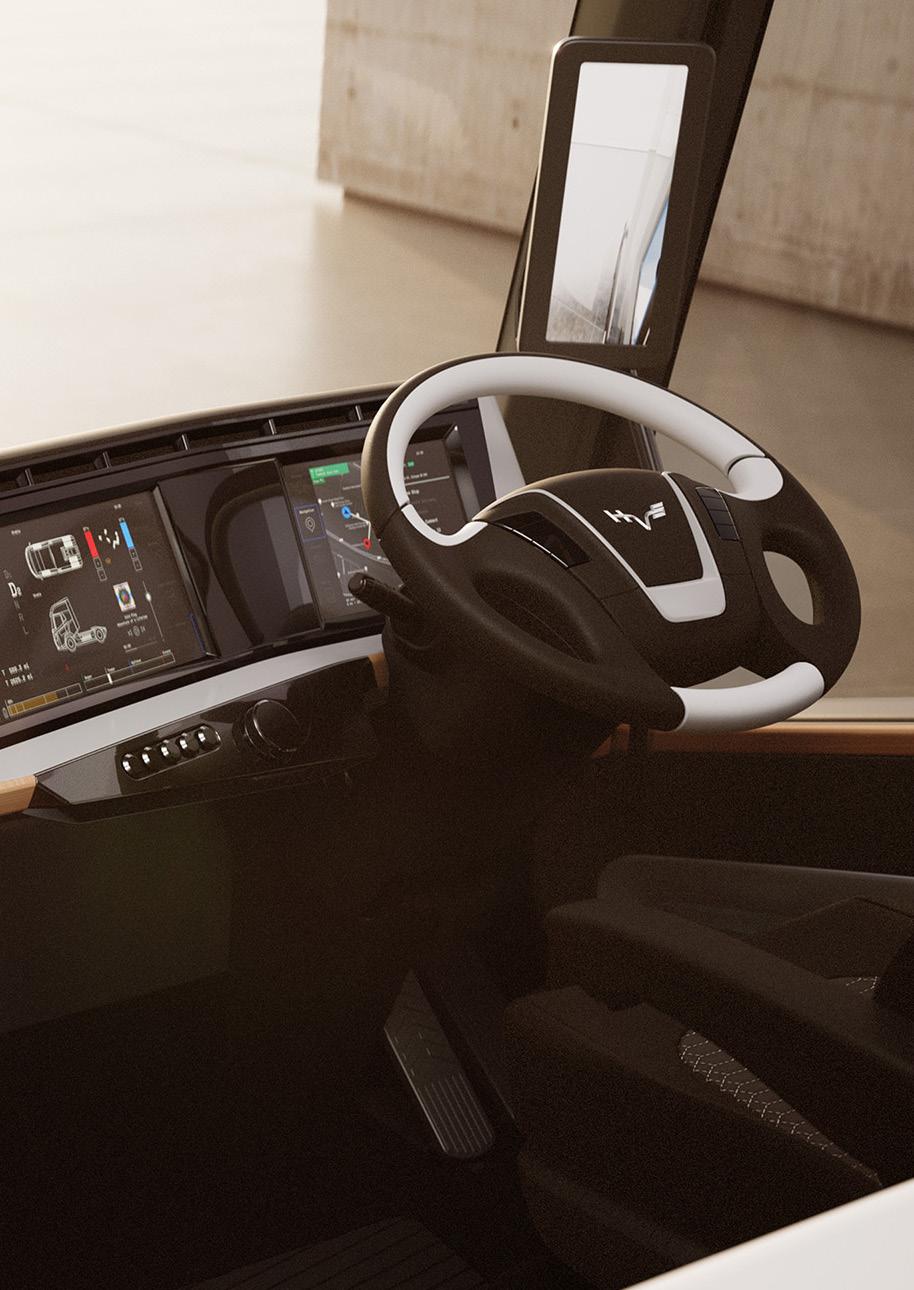

“What’s important to understand is that, unlike the passenger car market, you don’t need a fueling station at every corner,” says Jawad Khursheed, CEO of HVS Systems.


From a fleet perspective, the real demand is for strategies to understand what vehicles are capable of and beyond that, where the necessary stops should be. By working in partnership with Euro Garages (EG), the HVS approach is a great example of how hydrogen trucking can be optimised to maximise the best services that they can provide.
Operating along fixed routes means that, between Glasgow and London, only seven fueling stations would be required to operate hydrogen trucks to and from the cities. So
for any one who says that infrastructure is a tough challenge for the hydrogen vehicle sector, Khursheed would disagree.
“You could drive from the north of Scotland and Elgin to the south of Italy and only fill up at EG fueling courts,” explains Khursheed as he discusses how the network of fueling stations would develop for a hydrogen-powered fleet.
“We have a strategic investor who has hundreds of HGV-ready fuel courts at its disposable, means that the chicken eggs scenario goes away — in the sense that we would say to EG that we need fueling ports on these locations because of X, Y, Z, and within months, not years, we'd have a pop-up station ready.”
“GLOBALLY, TWO OF THE BIGGEST MARKET POOLS ARE ZERO EMISSIONS AND AI”
JAWAD KHURSHEED CEO, H VS SYSTEMS
Recognised by the 2022 E-mobility Awards as a crucial innovator in the ZEV sector, Hydrogen Vehicle Systems was awarded for its overall development of hydrogen-fuel-cell-powered vehicles, which will be made available to fleet operators.
When it comes to HVs, there’s battery technology to delve into, but a hydrogenpowered system with up to 600 km range for refuelling. Leveraging hydrogen as its source of power, the company is committed to driving wheel-to-wheel zero-emissions and developing HGVs that are more comfortable for the driver — who could soon just be along for the ride.
The hydrogen system and AI-assisted drive lets drivers take a more mindful approach to captaining their vehicle. The truck is built with improved visibility in the front and camera vision systems to cover any other angle beyond their eyes’ view.
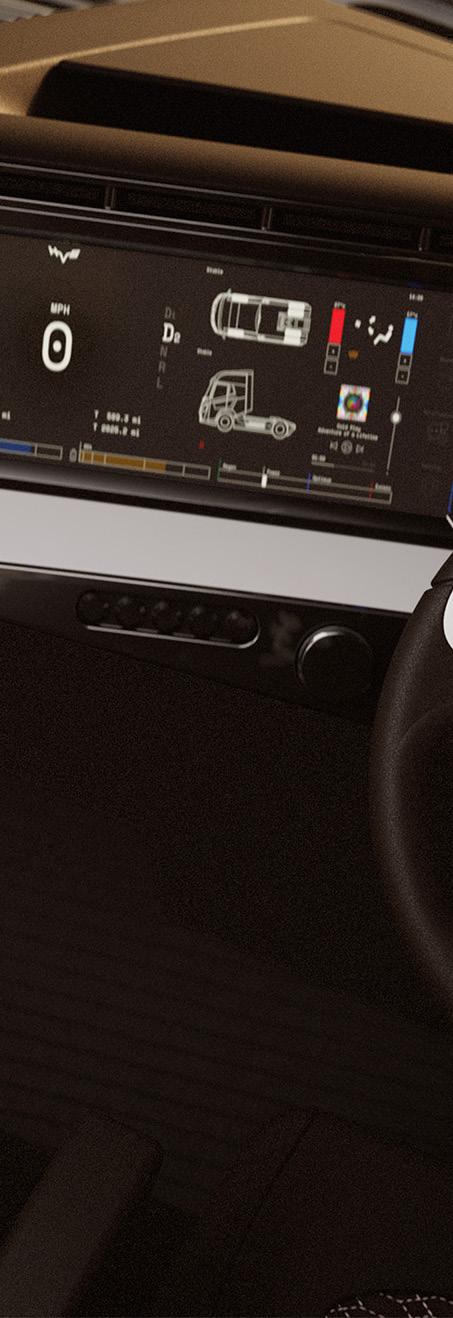
The key to operating a fleet network in the future is connectivity. With an increased emphasis on autonomy, connected solutions will allow more and more fleet managers to streamline vehicle control, by leveraging the latest self-driven vehicles the market has to offer.
“Globally, two of the biggest market pools are zero emissions and AI,” says Khursheed. “HVS is one of the first incorporating both of those products into one vehicle.”
“WHAT’S IMPORTANT TO UNDERSTAND IS THAT, UNLIKE THE PASSENGER CAR MARKET, YOU DON’T NEED A FUELING STATION AT EVERY CORNER”
JAWAD KHURSHEED CEO, H VS SYSTEMS
What the company strives for along with some others is to enable autonomy for commercial decarbonisation and reap the further benefits of fleet optimisation. While the company's acts in hydrogen, the lesson here is to use the correct solution for each application along with connectivity to manage vehicles wherever they are in their journey.
Incorporating AI and setting the target for the onboard computer means that, despite the driver having hold of the wheel, they are provided a safety net to ensure they meet the efficiency requirements of that particular journey.

By connecting vehicles to hubs on major routes, in the future this could reduce the stress on drivers and also provide more opportunities for a more diverse workforce to transport goods from hub to hub. Khursheed firmly believes that the truck environment and services provided are what deter women and people with disabilities from jobs in the industry. With connected hubs overseeing the operation of hydrogen trucks in the future, he hopes that further talent will be keen to get involved.
“Currently, our HGV drivers are generally middle-aged men. Because the vehicle will be operated from a control centre, it brings in a whole new industry. Females are more likely to work inside the call centre or a control centre than they are inside a truck where private rooms aren’t as clean as they would like,” says Khursheed.
“We’re also able to get people with less ability — people in wheelchairs etc — to come and work in the industry.”




Thanks to a conversation with Gaurav Batra from EY, we’re delving into the current EV landscape of India and its procedures to accelerate electrification
The EV transition is driven by action on part of national governments and the private sector, which must combine efforts to ensure global emissions targets are met. One major milestone of this will be the 2030 ban on internal combustion vehicles, which is easier said than done for less developed economies.
Take India as an example. With growing demand for zero-emission solutions, the country’s infrastructure is evolving, but not at the rate of those nations and regions that leapt into the EV transition — China, the US, and Europe. This is not to put fault on the continent, but merely to present a perspective view of the country’s transition to EVs and the problems holding India back from reaching new electrification heights.
With targets set for the majority of countries, it’s uncertain at this stage what impact the ban of fossil-fuel vehicles will have, but Gaurav Batra, Associate Director and Portfolio Lead - AM&M, Energy & G&I at EY, suggests the aim for India is to electrify as fast as it possibly can.
There are a number of factors to consider when we look at this particular country’s transition. Firstly, there’s the market. Batra points out that around 90% of India’s passenger-vehicle market is occupied by two-wheel and three-wheel vehicles, albeit the majority are still powered by ICEs. This suggests the transport sector revolves





According to Gaurav Batra, around one million EVs were sold across the country in 2022, which marks 4 - 4.5% of its overall pool of passenger vehicles. In 2021, EVs accounted for a lesser share at just 1 - 1.5% of the nation’s registrations.
around more nimble forms of mobility and shows a potential trend as smaller vehicles could be electrified first.
Secondly, infrastructure is a pivotal point to be discussed as India’s power grid is currently seen as ‘inadequate’ for a nationwide rollout of electrified means of travel. The country needs to be able to provide EVs for its drivers, chargers for those cars; bikes; and electrified rickshaws, and supply sustainable energy to sockets nationally.
The challenge to electrify certainly doesn’t come from a lack of trying, but, as pointed out by Batra, India is home to the third largest automotive industry globally.

“India is an important market with the welldeveloped local manufacturing of ICEs and a well established supply chain, which is cost effective and can also claim export competence in the ICE domain,” says Batra.
Discussing this in great detail, Batra divulges some key pieces of information
“THE CHARGING INFRASTRUCTURE AT THE MOMENT IS FAIRLY DEFICIENT ACROSS THE COUNTRY”
GAURAV BATRA, ASSOCIATE DIRECTOR AND PORTFOLIO LEAD - AM&M, ENERGY & G&I, EY

surrounding India’s electrification, but like other countries, a combination of transport types are required to ensure a sustainable e-mobility ecosystem is developed for the future. From what Batra says, the Indian automotive industry is hitting increasingly higher numbers of EV sales.
But EVs only make up a minor percentage of the overall market and, to transition such a large number of vehicles, requires a significant amount of time and investment in a number of factors. While passengercar makers are looking to increase the number of four-wheeled EVs on its roads, the emphasis is on smaller vehicles — to meet both consumer mobility needs with minimal grid impact — and fleet vehicles to decarbonise its industries.
Although there are a number of incentives offered by the central government to encourage EV adoption, a number of states are developing their own approaches, which is where proficiency is varied.
“When it comes to the two-wheeler segment, that has benefited the most

“THE GOVERNMENT HAS BEGUN TO INTRODUCE POLICIES SPECIFICALLY FOCUSED ON DEVELOPING CHARGING INFRASTRUCTURE”
GAURAV BATRA, ASSOCIATE
because of the incentives that the government offered at the central level to stimulate growth,” says Batra. “Segments such as buses and heavy commercial vehicles are also benefiting.”
“Besides the central government incentives, there are 10 to 15 state governments, which also offer incentives of different kinds, either in the form of subsidy or lower taxes for EV-led vehicles. Because of that, some of those states have witnessed higher traction.”
Of course, the rollout of EVs is paramount, but — you’ll have heard this many times — efforts are voided by the lack of available charging infrastructure. Different challenges across all countries mean there’s no onesize-fits-all strategy for deployment across them, but the onus seems to be on authorities to make change happen.
Currently there is only one charger for 135 vehicles in urban parts of India.
To put the situation into perspective, India spans 1,269,219 square miles while the UK is 94,530 sq miles, but the charger expectation by 2030 is substantially different. The UK is aiming for 300,000 public chargers nationwide by the end of this period — along with substantial adoption of EVs themselves — but India’s government is stretching to roll out 46,397 public charging stations across nine cities.

“The charging infrastructure at the moment is fairly deficient across the country,” says Batra. “What has happened in the recent months is that a few OEMs have begun to develop their own charging infrastructure



tie-ups with charging network operators, providers, and power utility companies.”
This point sums up where private input is crucial to the successful transformation of India’s network. Companies have the power to work together and enable faster rates of charging innovation and rollout, which will help bridge the gaps — resulting from investments pivoting between vehicle manufacture and charging installations.
“The government has begun to introduce policies specifically focused on developing charging infrastructure. There’s a certain amount of funding earmarked for charging infrastructure,” says Batra.
“As part of developing this infrastructure, the government has also reached out to our top three fuel retailers to build a charging network across their own. I think the expectation from the government is that, essentially, there will be a charging station available every three to five kilometres.”
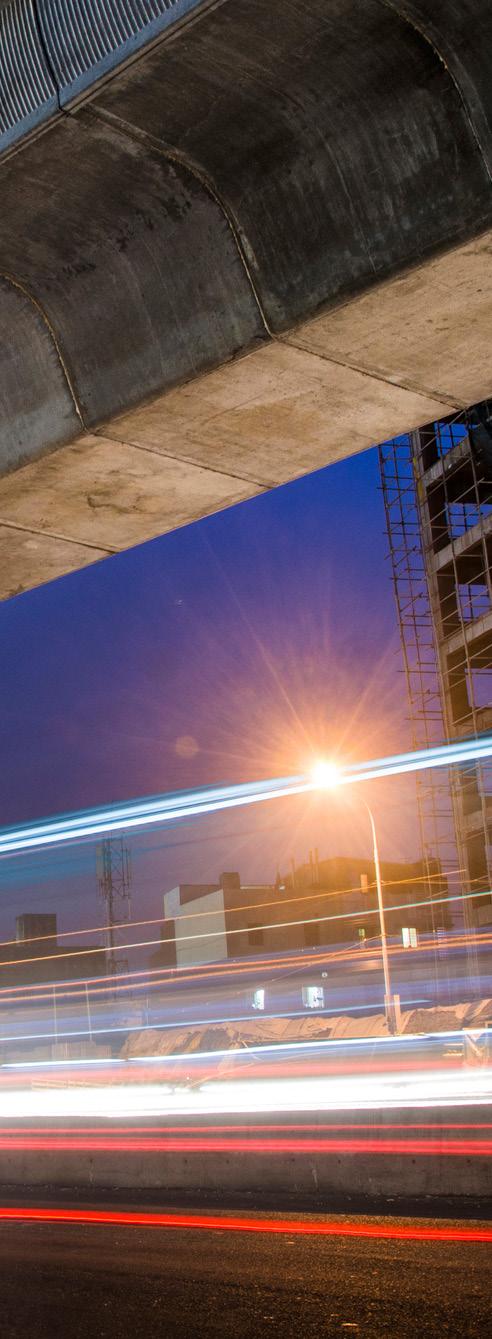
“INDIA IS AN IMPORTANT MARKET WITH THE WELL-DEVELOPED LOCAL MANUFACTURING OF ICEs AND A WELL ESTABLISHED SUPPLY CHAIN”
GAURAV BATRA, ASSOCIATE DIRECTOR AND PORTFOLIO
LEAD - AM&M, ENERGY & G&I, EY
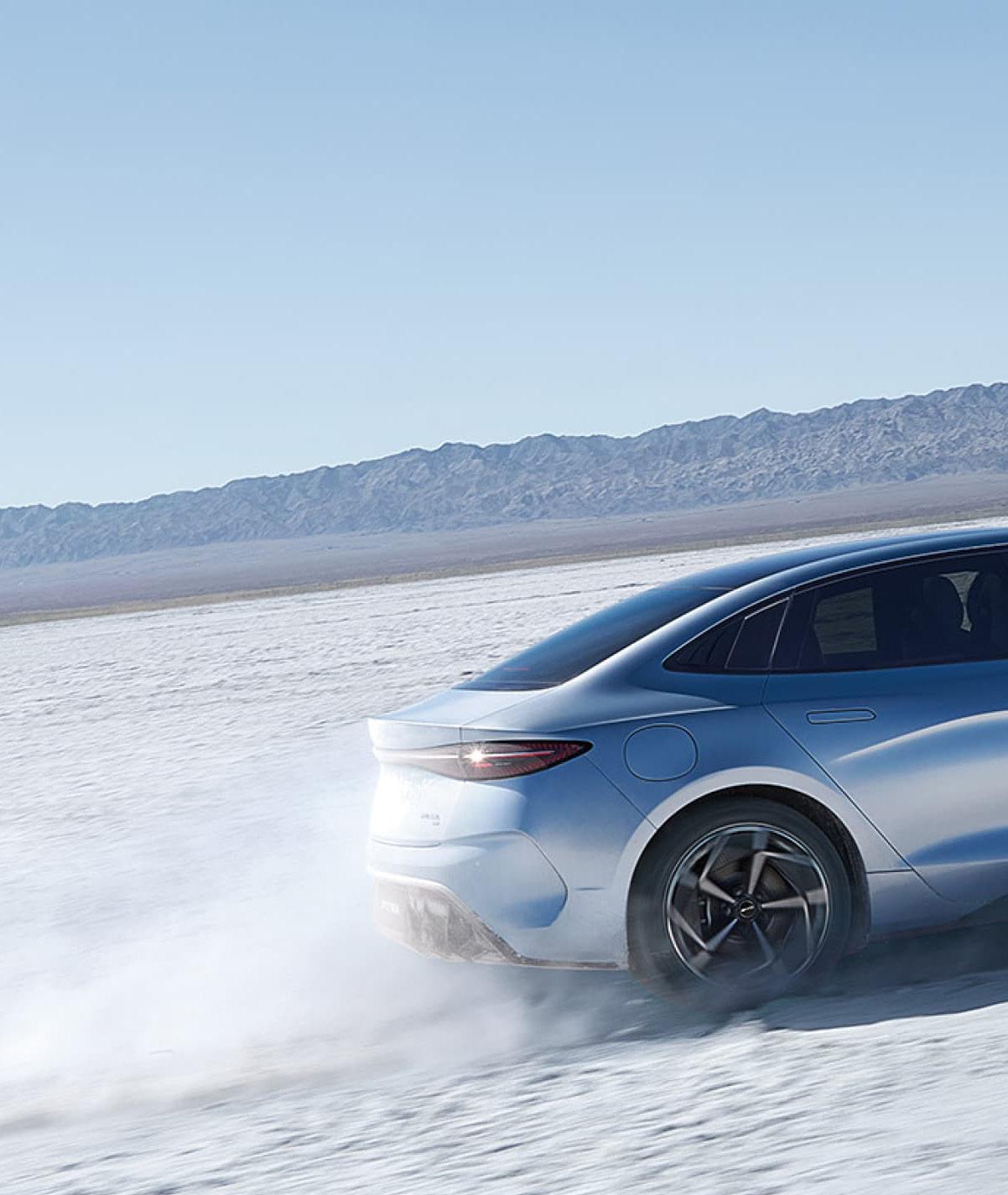
The transition from ICEs to EVs is shaping up to be the biggest transformation of our time, but who’s leading the way in all this sustainable action?

Anumber of major shifts are happening in the global EV market. What was once dominated by a select number of electric car models is now home to an abundance of options for prospective EV drivers, and current customers, to choose from.
But, while there are further barriers to EV domination globally, some countries are
challenging the norm and developing cars that have seen great popularity around the world — particularly in China, the US, and Europe, where most of the mainstream innovation is taking place.
With all this in mind, let’s check in with the data to find out what company led the market in the beginning of 2023.
With a 3.82% share of the overall EV market in the first quarter of 2023, Renault was somewhat an early-adopter through its Zoe model, but is still involved in the hybrid vehicle space. The company’s evolution consists of BEVs alongside PHEVs and HEVs as a bridge to a more sustainable product lineup.

This month, we’re expecting the release of the latest model from the French car maker, the Renault Scenic E-Tech.

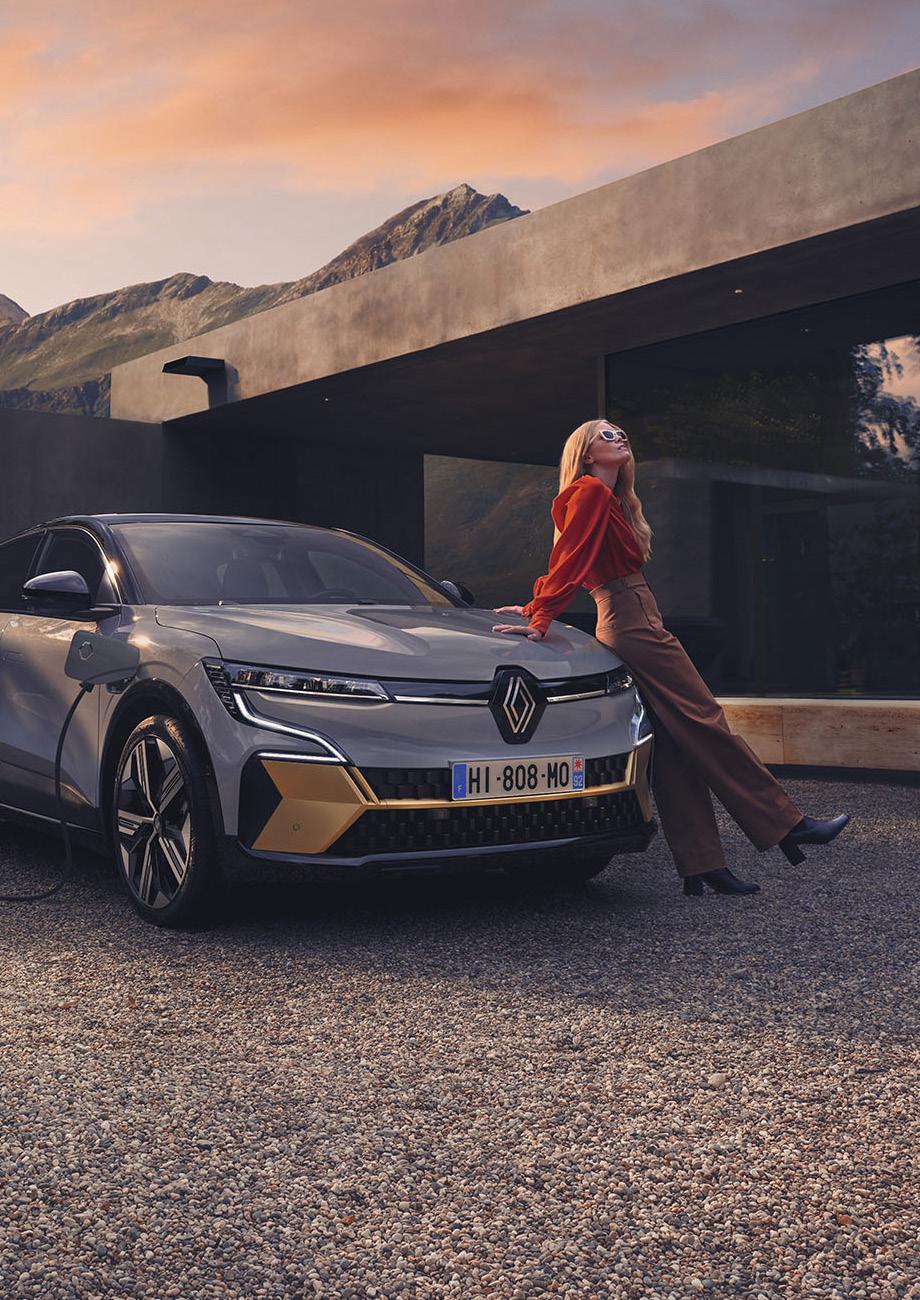
Chinese firms seem to be at the forefront of innovation and Hyundai Motor Group is one OEM that has managed to successfully begin its transition to the electric side. With growing interest in its IONIQ models, the company achieved just 0.01% less than its upper rival—a market share of 3.96% of the BEV sector.
Nevertheless, the company continues to offer exciting new products for consumers globally and making changes to increase battery density and reduce costs.

Stellantis set its course for 100% EV sales in Europe and 50% across the United States before the end of the 2030 deadline. As a group, the company will expand upon its current range, giving the muchloved Fiat 500e a number of brothers, sisters, and cousins across its brands—a total of 75% different BEVs.
As a result, the company’s growth has been steady— with a 3.97% share of the market in early-2023—and will continue to accelerate to five million units.


Since the release of the iX, the concepts and new vehicles have been coming in hot as BMW enters full swing in its EV transition. The company’s efforts to increase its BMW and Mini EV ranges resulted in a market share of 4.16% in the first quarter, but in quarter two of 2023 the company doubled its sales of all-electric cars.
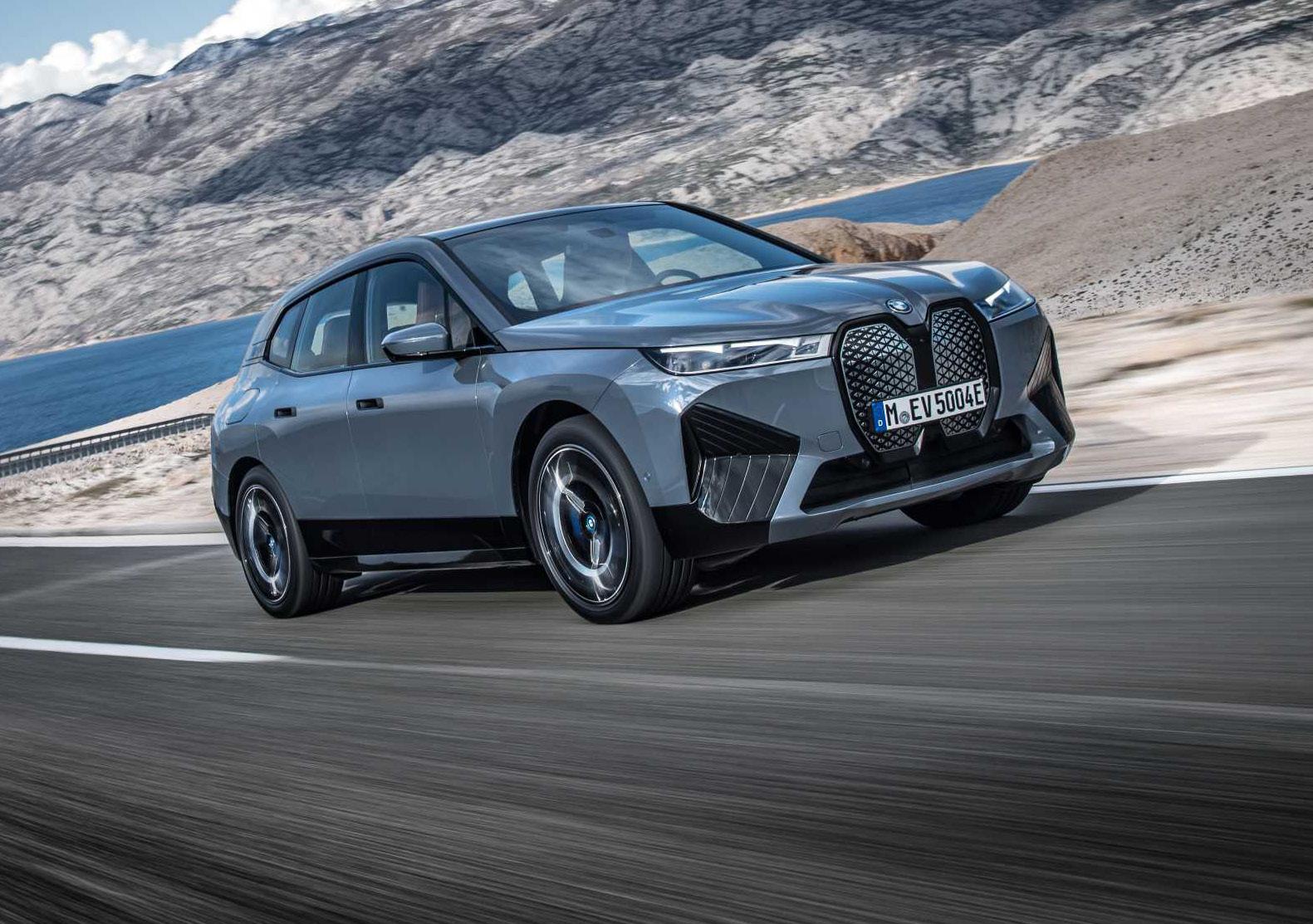
The BMW brand was up 5% year-to-date but overall quarterly sales were +11% while the Mini brand only saw 0.2% year-to-date sales and a 10% increase for the three-month period.

Another firm contender from the German market is Mercedes-Benz, which has seen significant interest in its electrified models. The company tends to maintain the same brand aesthetic, but power replaces the powertrains to create sustainable, advanceable vehicles.
Taking 4.28% of the overall market, we’re beginning to see a shift at Mercedes-Benz, particularly in the design of its cars, as it builds for electric propulsion first.

Daring to be different, the US-based automotive giant is climbing up the chain as it brings its heritage automobiles into the world of electrified ones. One of the company’s most intuitive models is the Hummer EV, which showcases some of the technological details that can be applied to make an out-of-this-world electric car.
Achieving a 4.71% share of the EV market, the company’s CEO Mary Barra is keen to drive positive change through electrification.
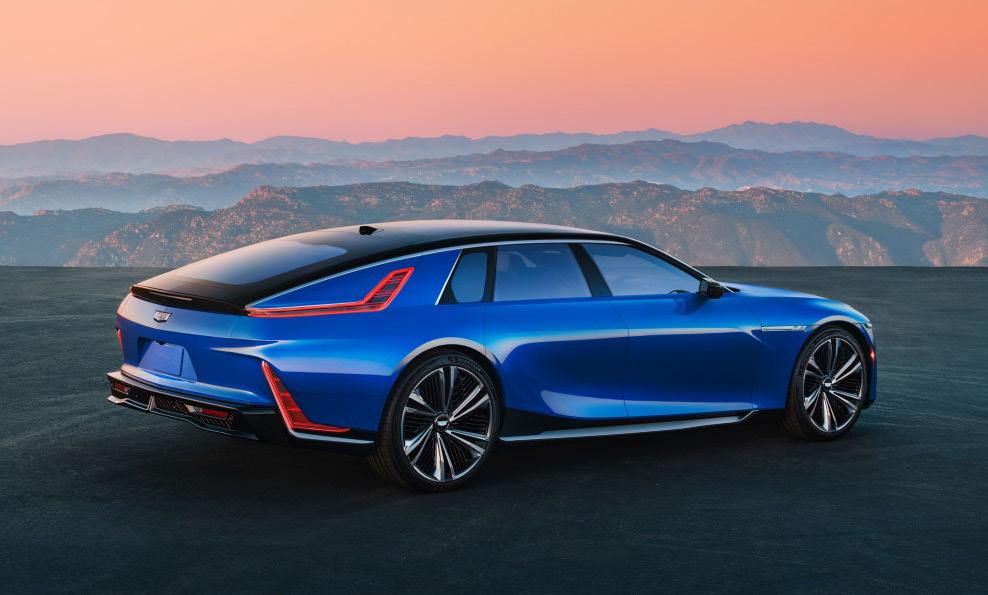
Experiencing major growth in 2022, GEELY is now operating more in the EV space. With the launch of the latest brand Zeekr, and the transition of its UK-based company Lotus, there are some major changes happening for the organisation to acquire a 5.86% share of the market.
The company attributes this growth to the number of automotive brand making tracks in the market, including the growth and innovation of Volvo and Polestar, as well as new pure-play EV brands like Lynk & Co and the taxi arm of the business, LEVC.
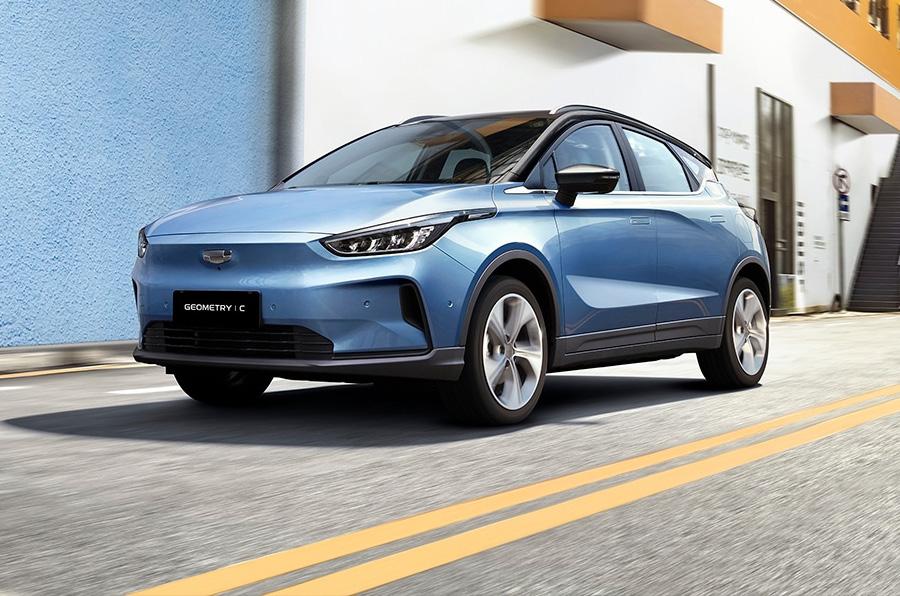
The traditional German OEM is leading the way among all heritage car companies as it takes the top spot for the businesses transitions from ICE vehicle ranges to all-electric ones. Achieving an overall EV market share of 6.88%—as recorded by the research organisation Counterpoint and its Global Passenger Electric Vehicle Model Sales Tracker—Volkswagen is well on its way to becoming fully-electric.
The company has also gained the attention of one of London’s most prestigious fleet businesses as the primary transition partner for Addison Lee and the company is now scaling back production of its ICE vehicles to make room for more EVs.

Still not giving away the leading position easily, Tesla remains one of the top brand choices for EV drivers with a 16% share of the overall market in the first quarter. This year also marked great strides for the company as the first one of producing the Tesla Semi for the fleet sector, but also the introduction of the update base Model Y.

The company’s CEO Elon Musk was heralded as the world’s richest man again in July 2023 and the company announced further excitement as the Tesla Electric business looks to develop further supply chains globally. Also, news of the company’s innovation base in India is set to raise the profile of EVs further across the country.


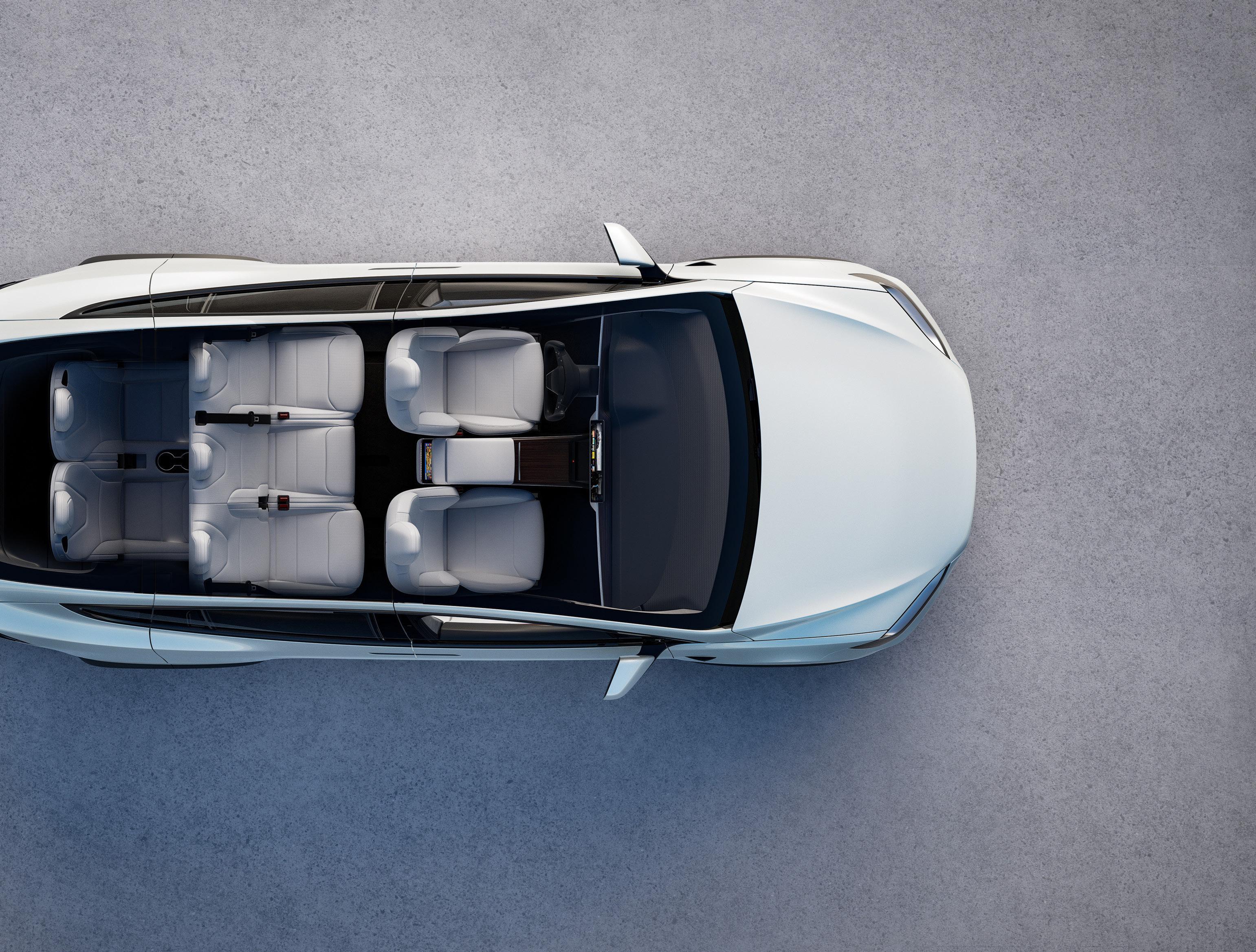

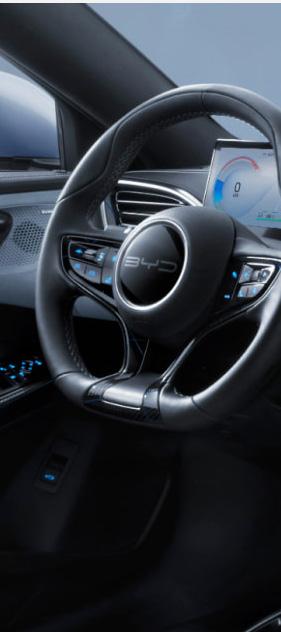
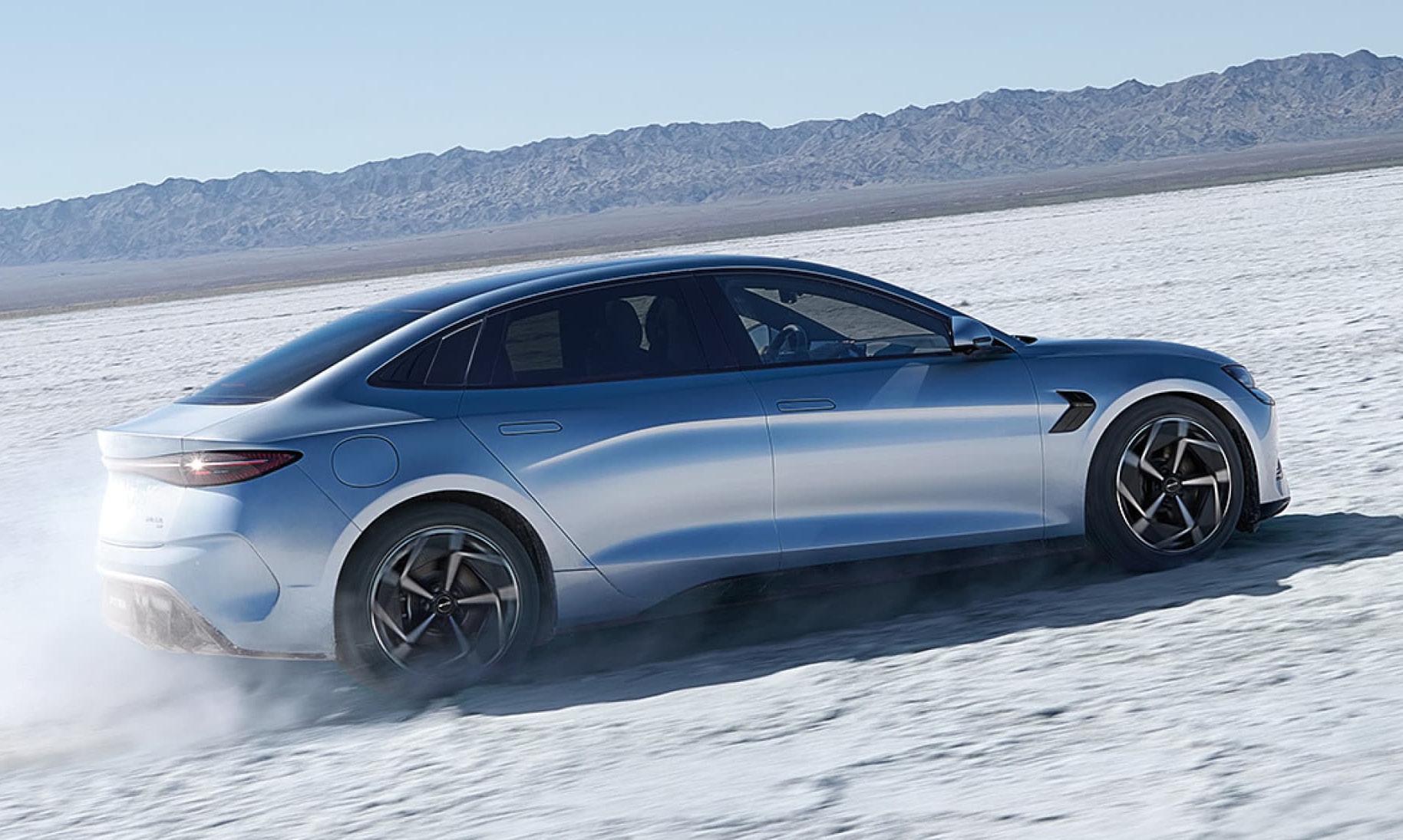
The Chinese underdog now market leader soars above Tesla in the first quarter of 2023 and achieves a market share of 21.1%. The company has been navigating pivotal changes inthe industry, which have affected the supply chains between China and the US.


With both countries looking to retain their own markets to allow their local industries to grow, China’s BYD is driving more adoption across all areas and has seen a great reception of its latest electrified car models.
WATCH
CATCH THE LATEST UPDATES AND RECEIVE EV NEWS INSIGHTS
